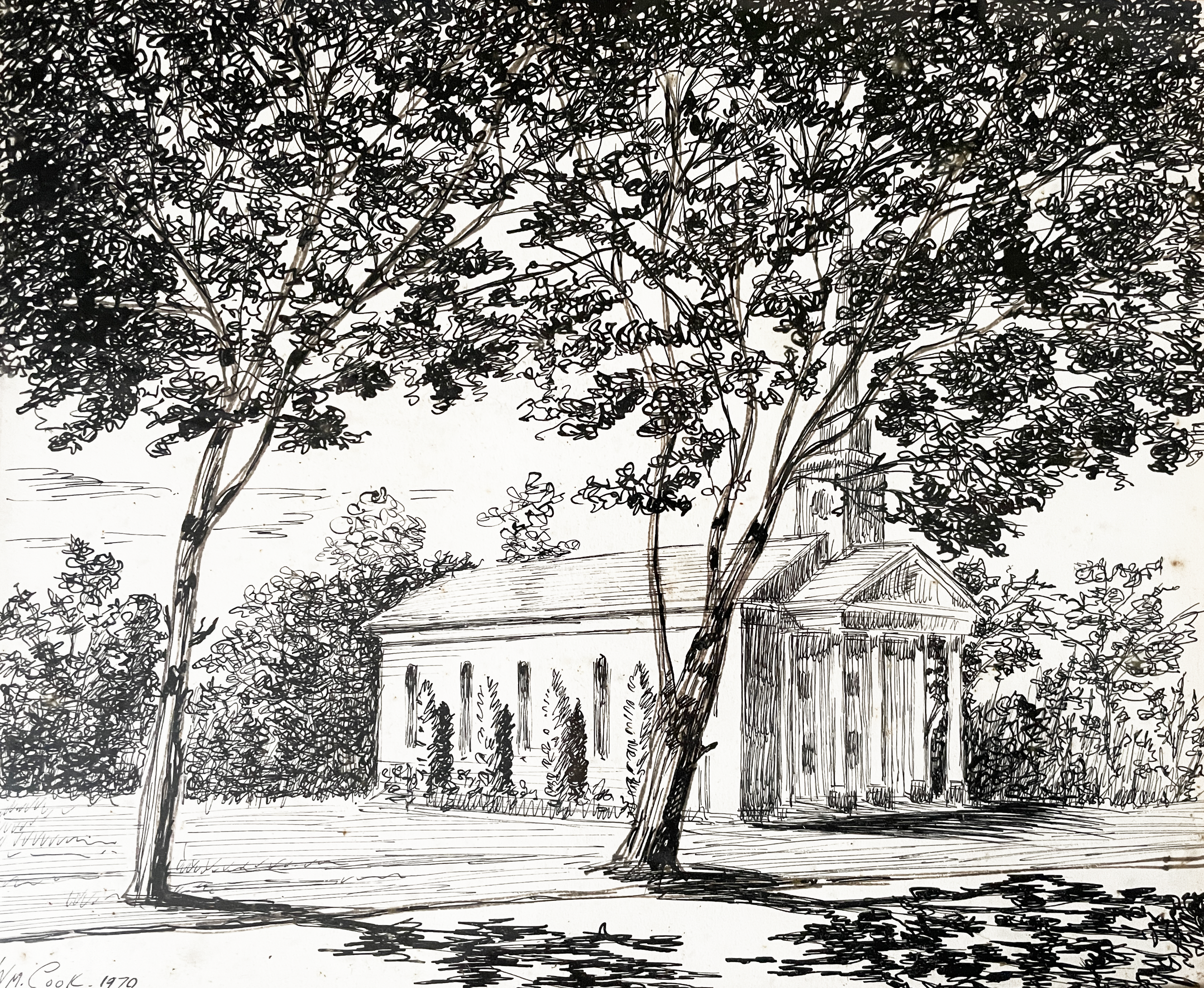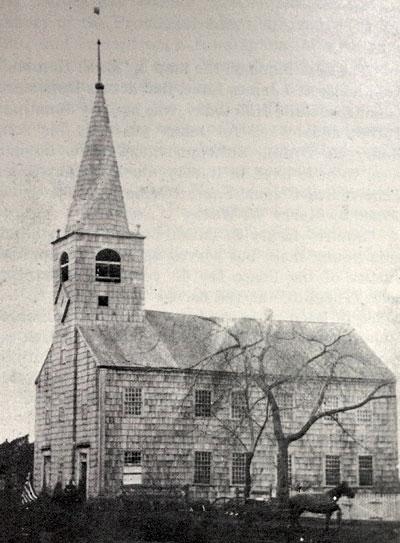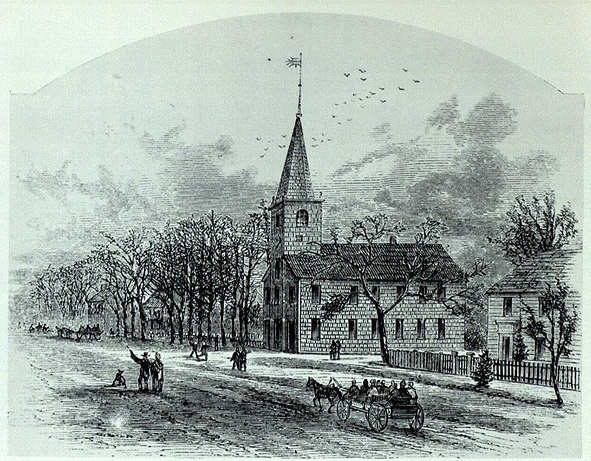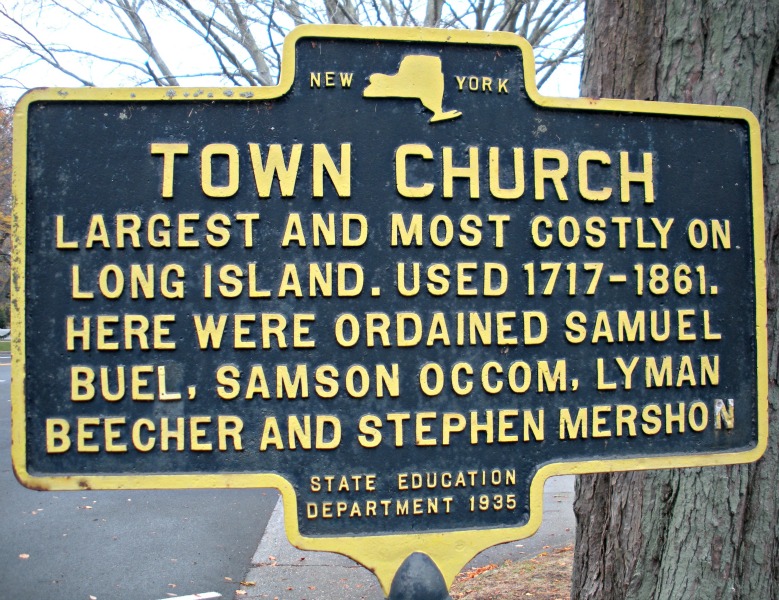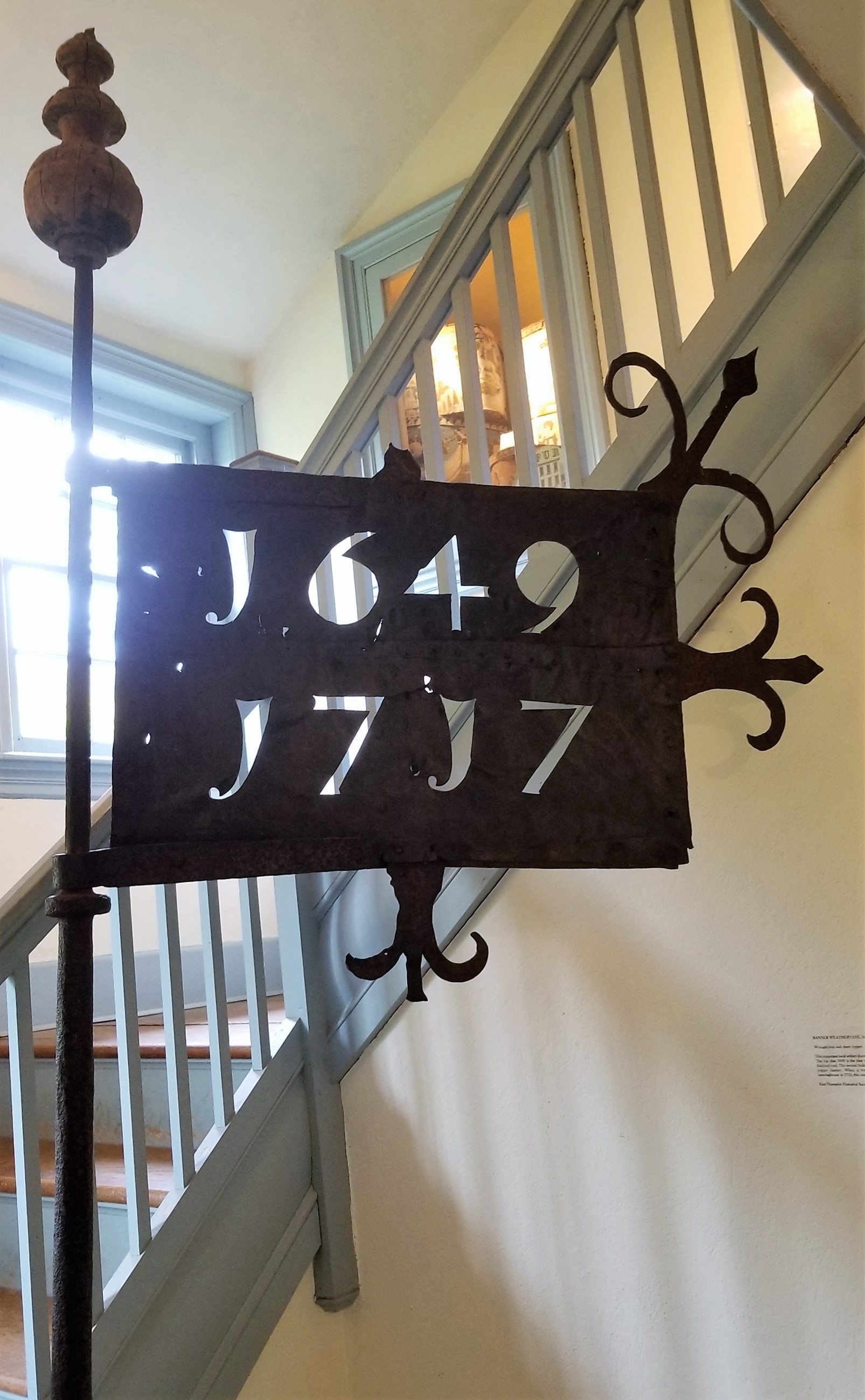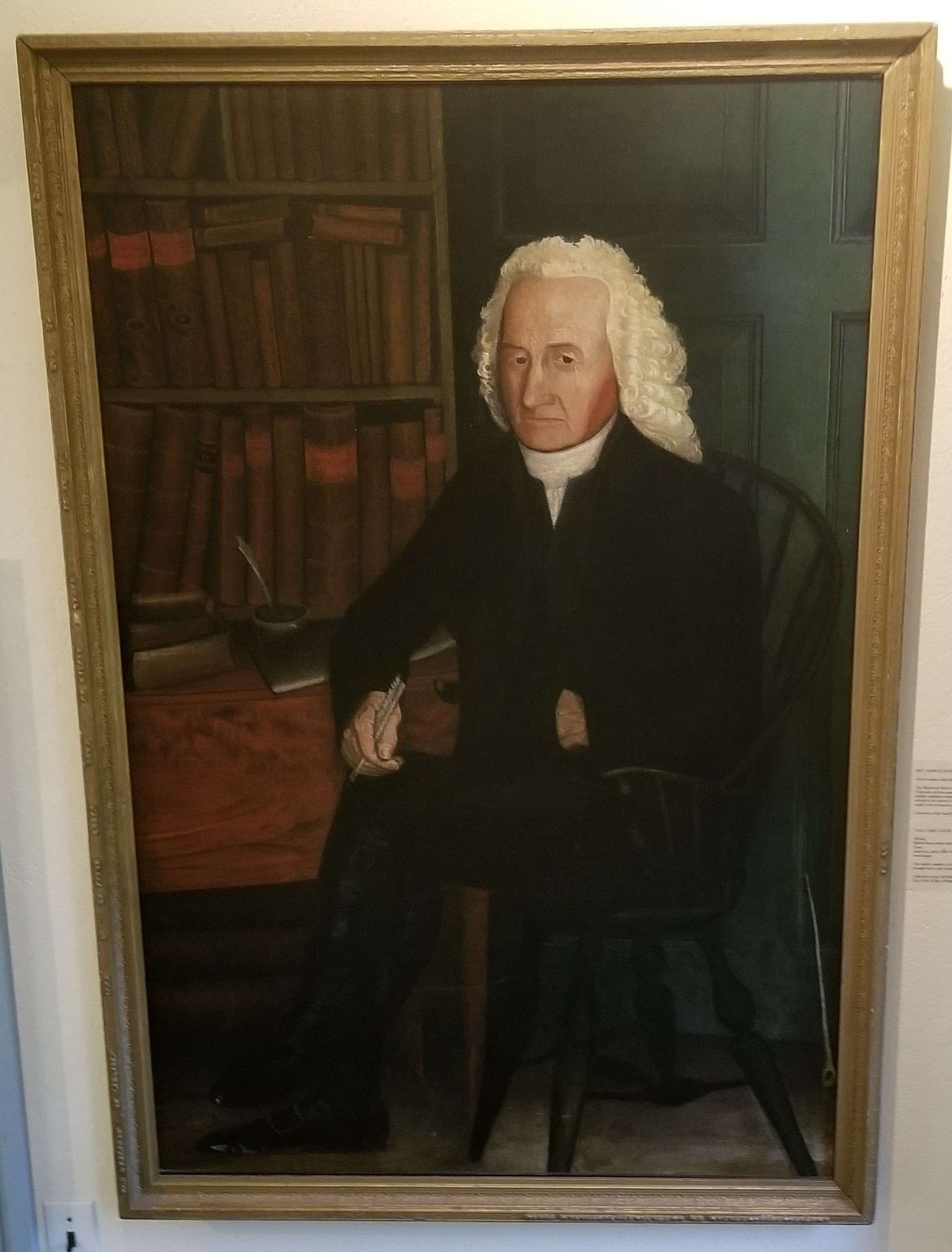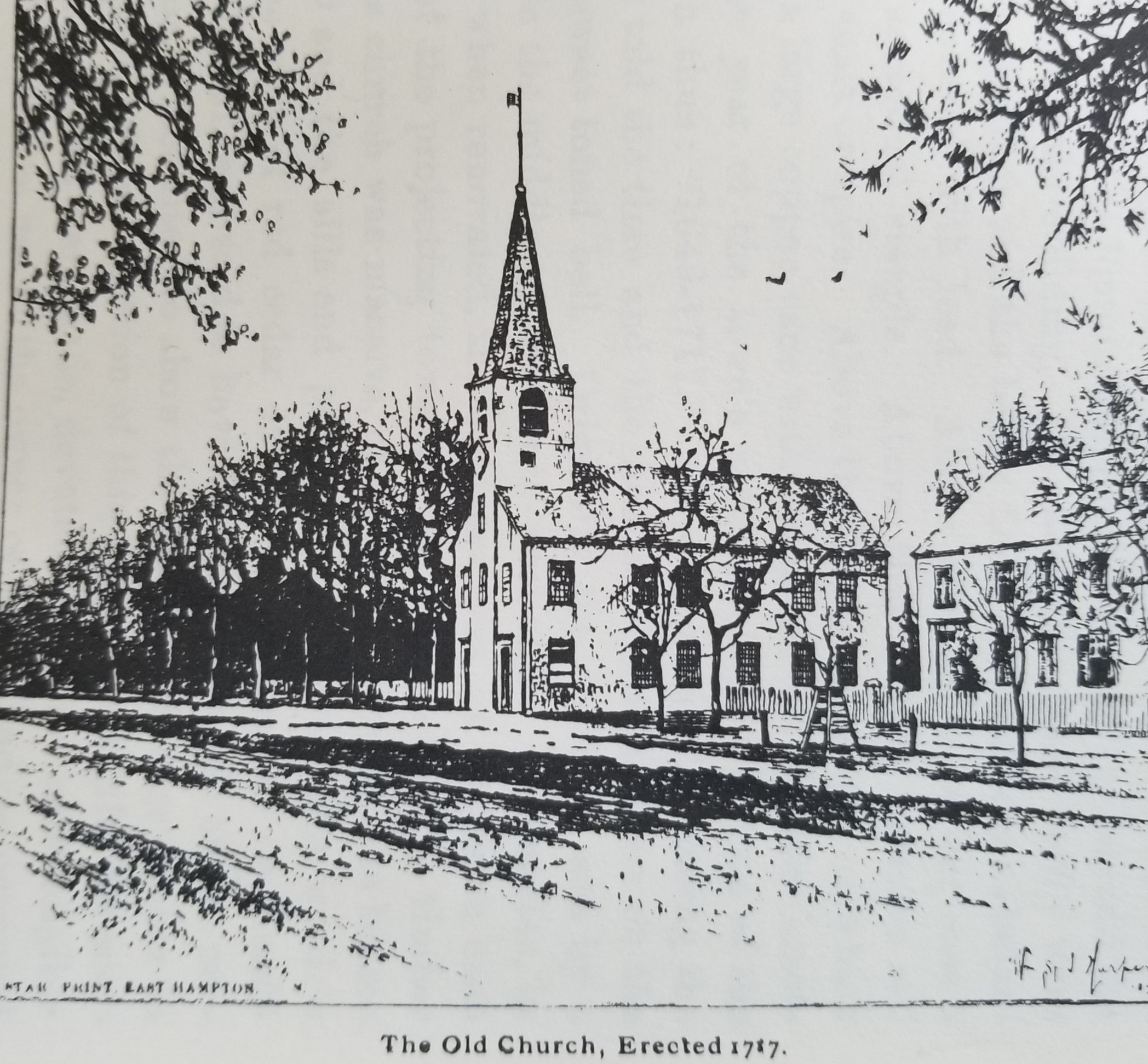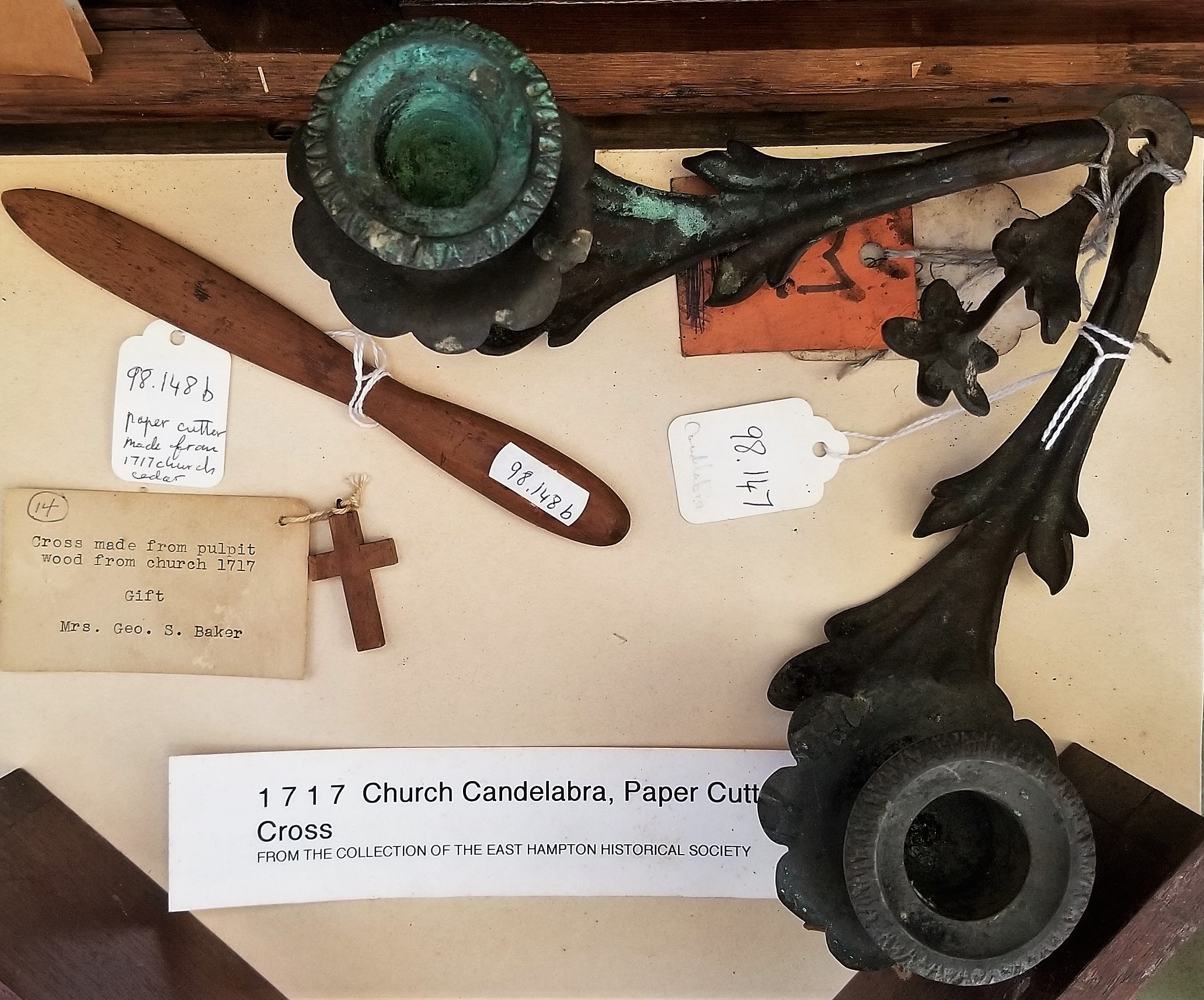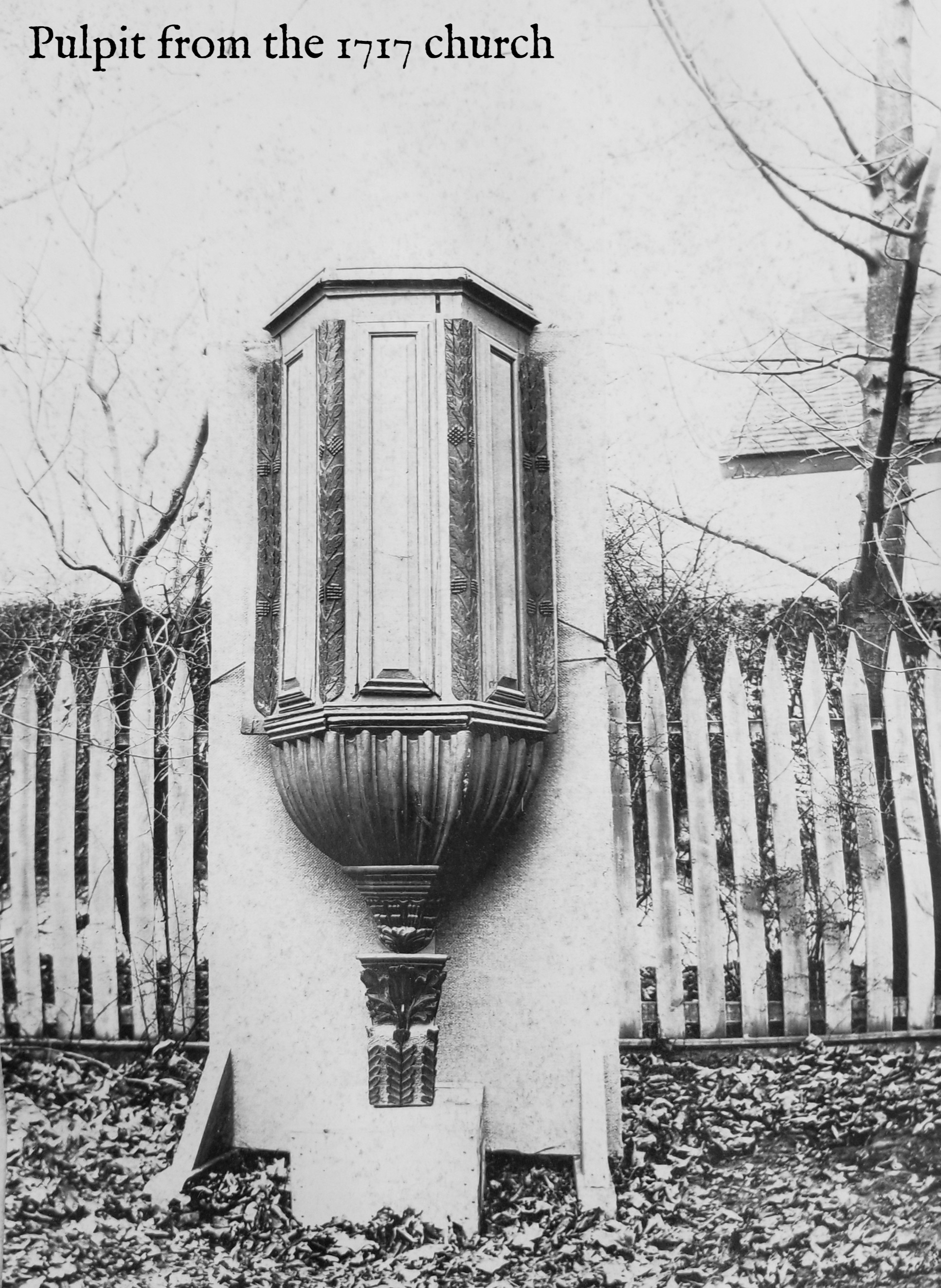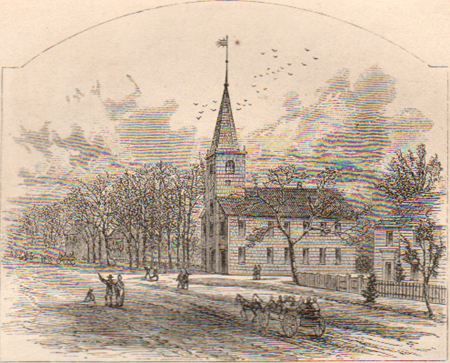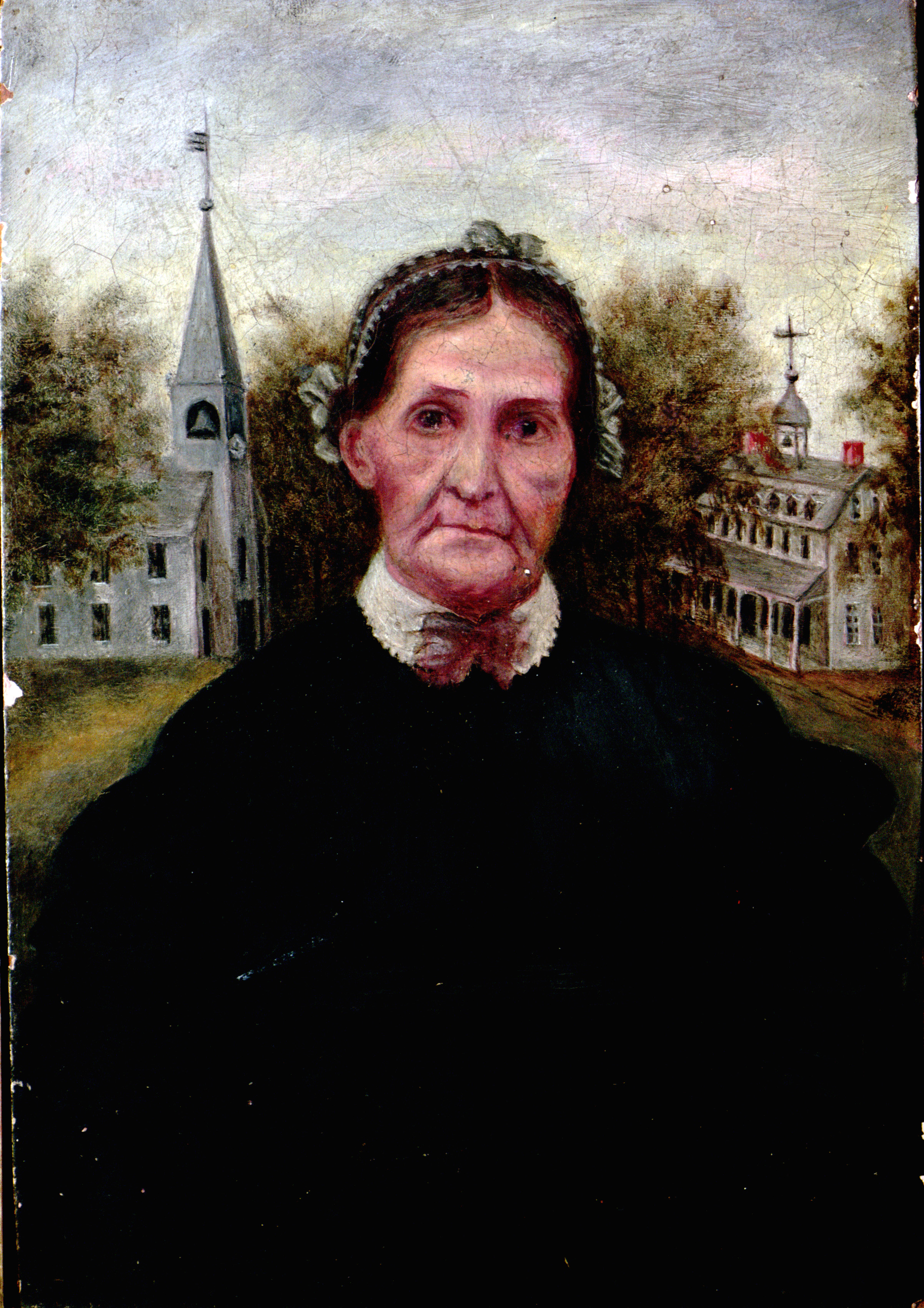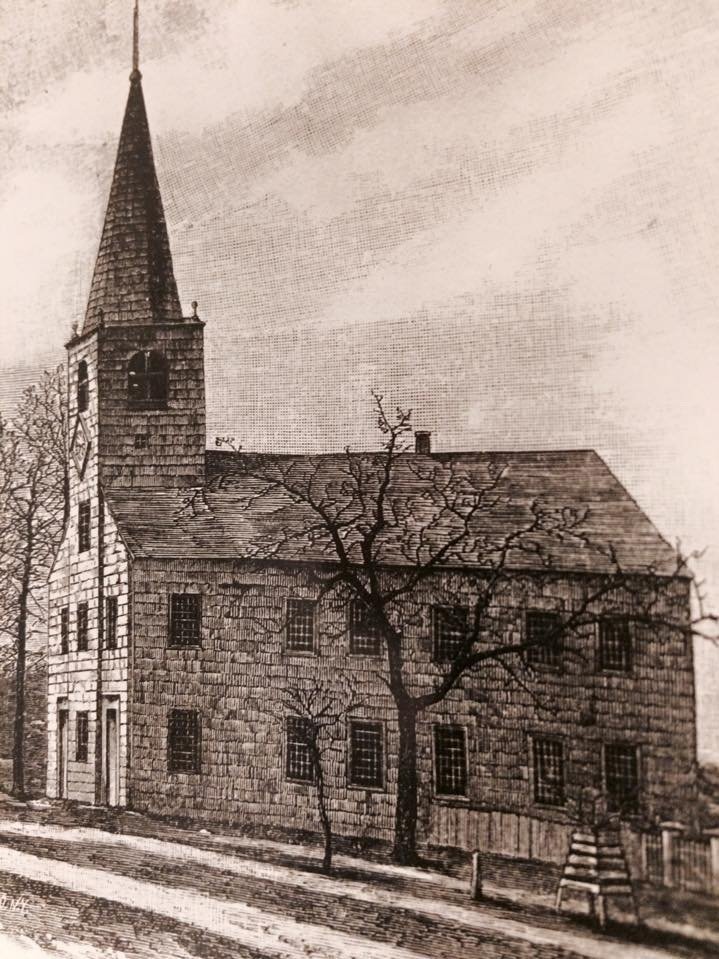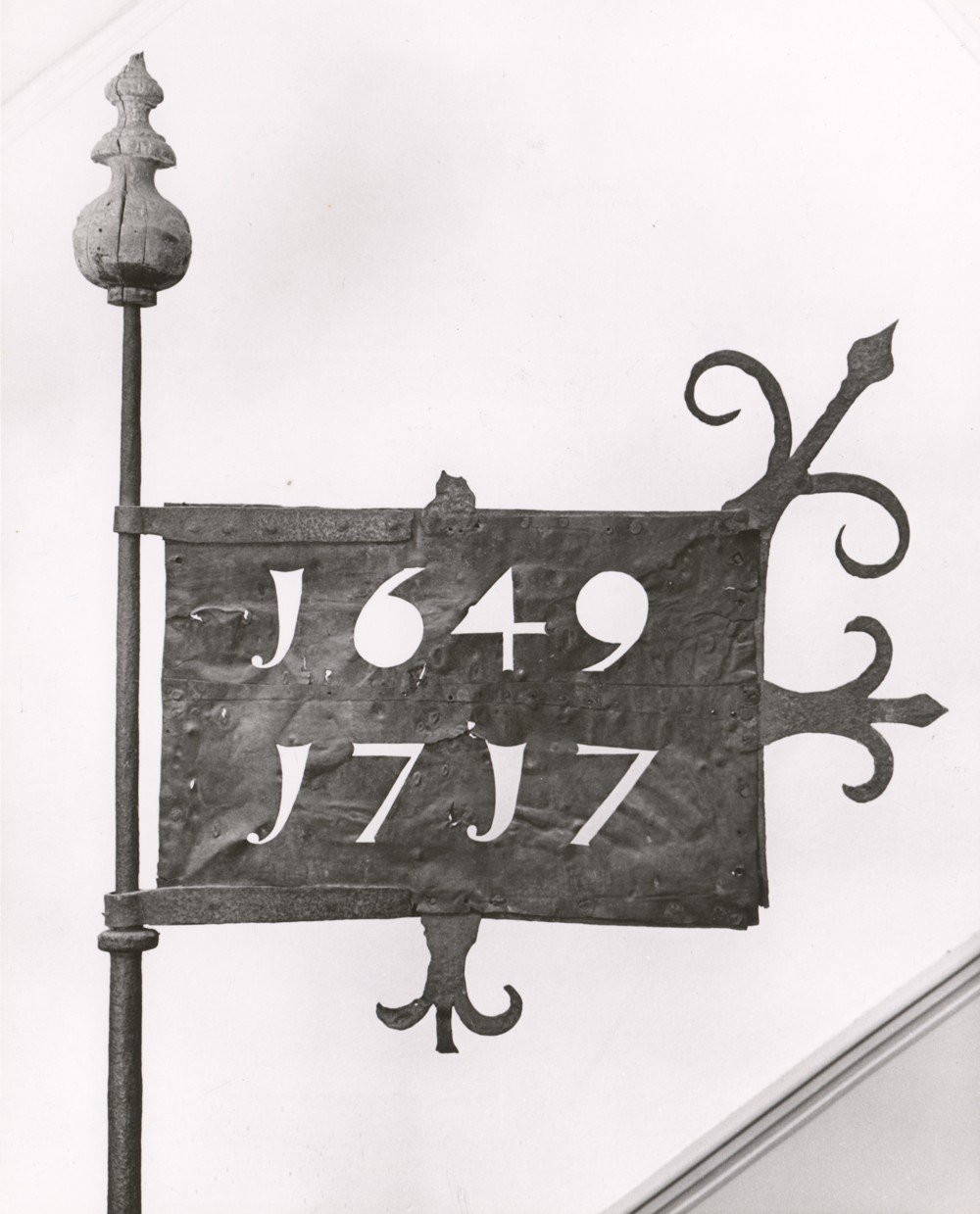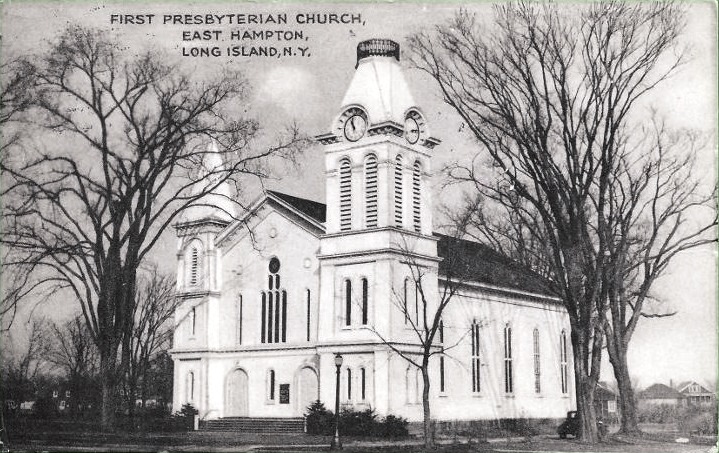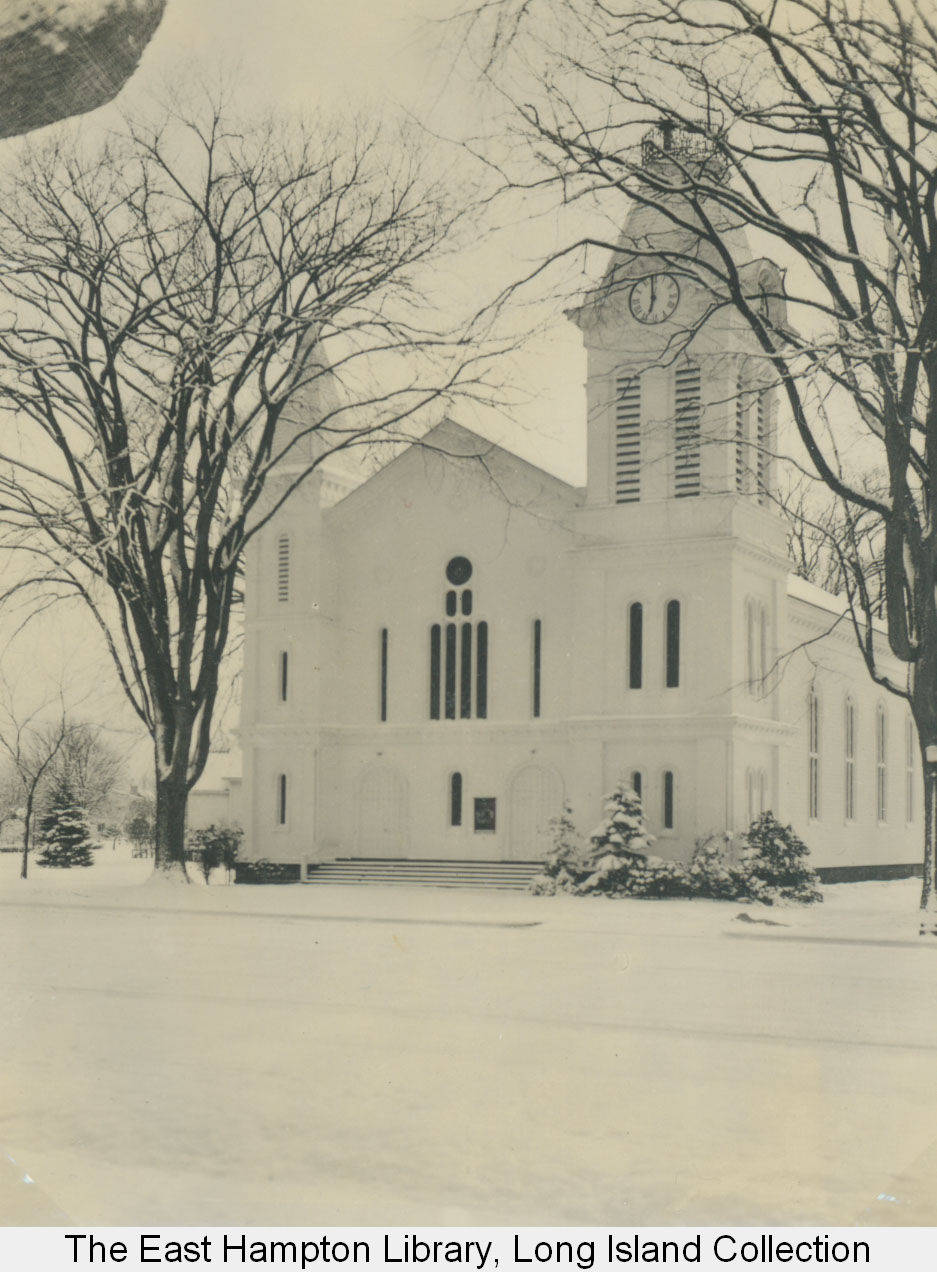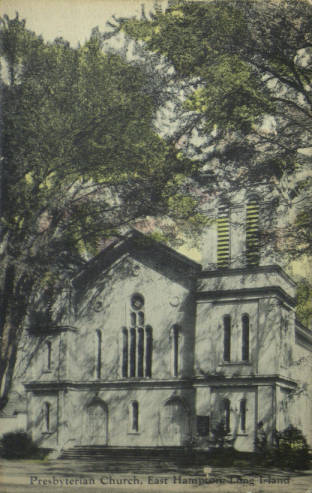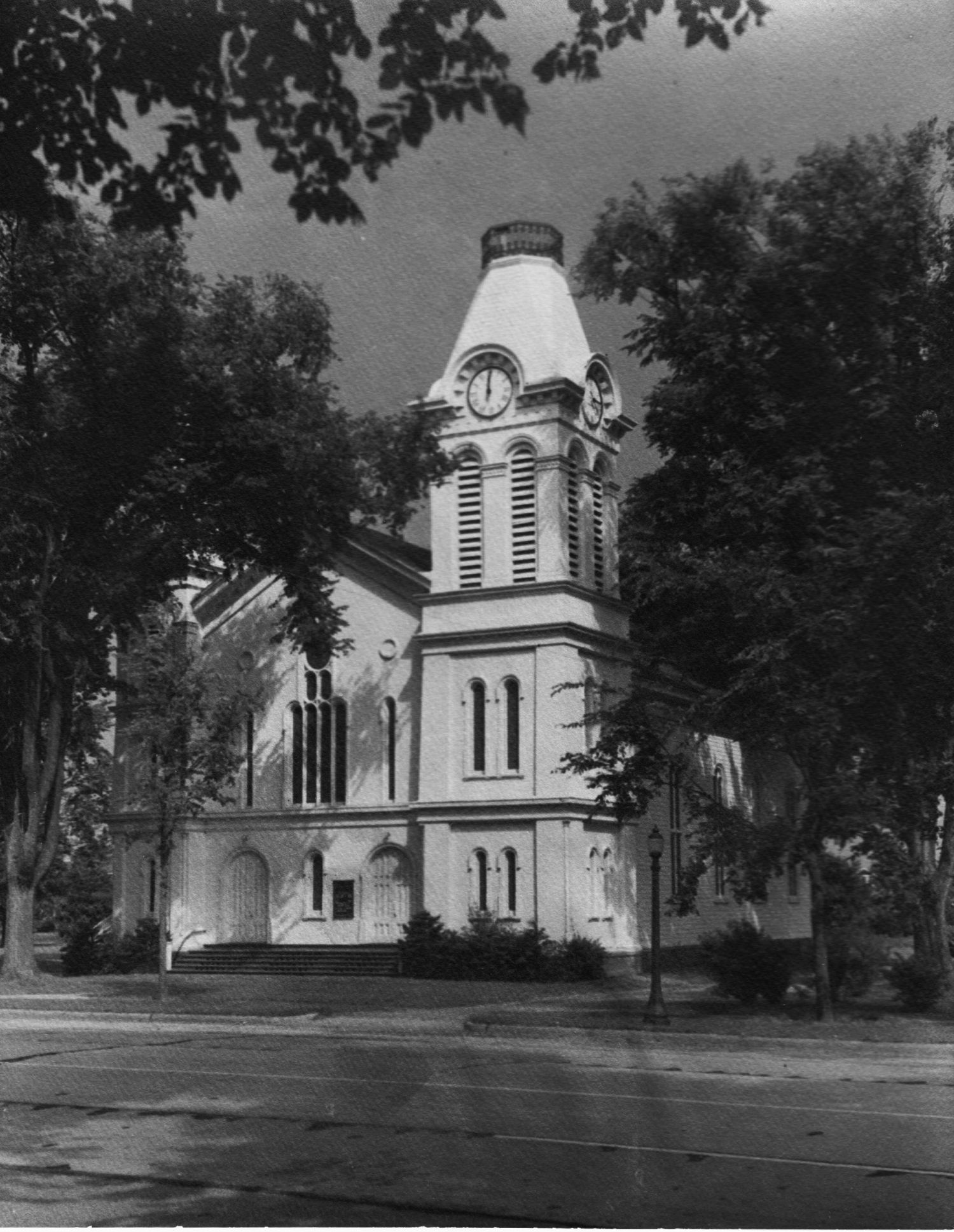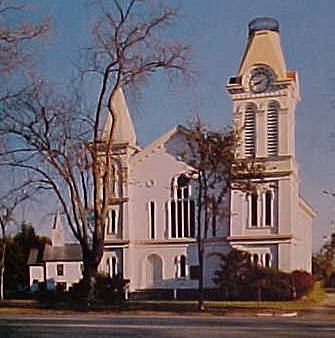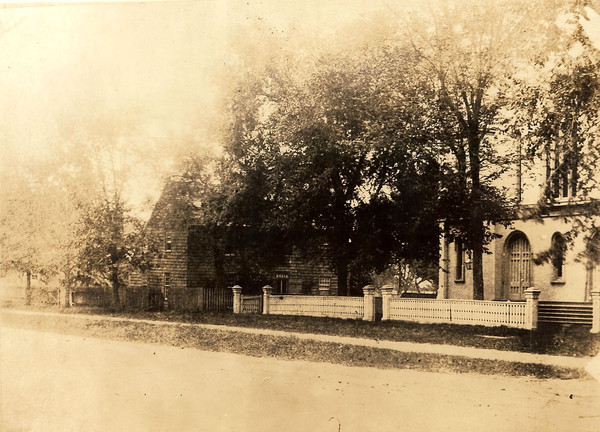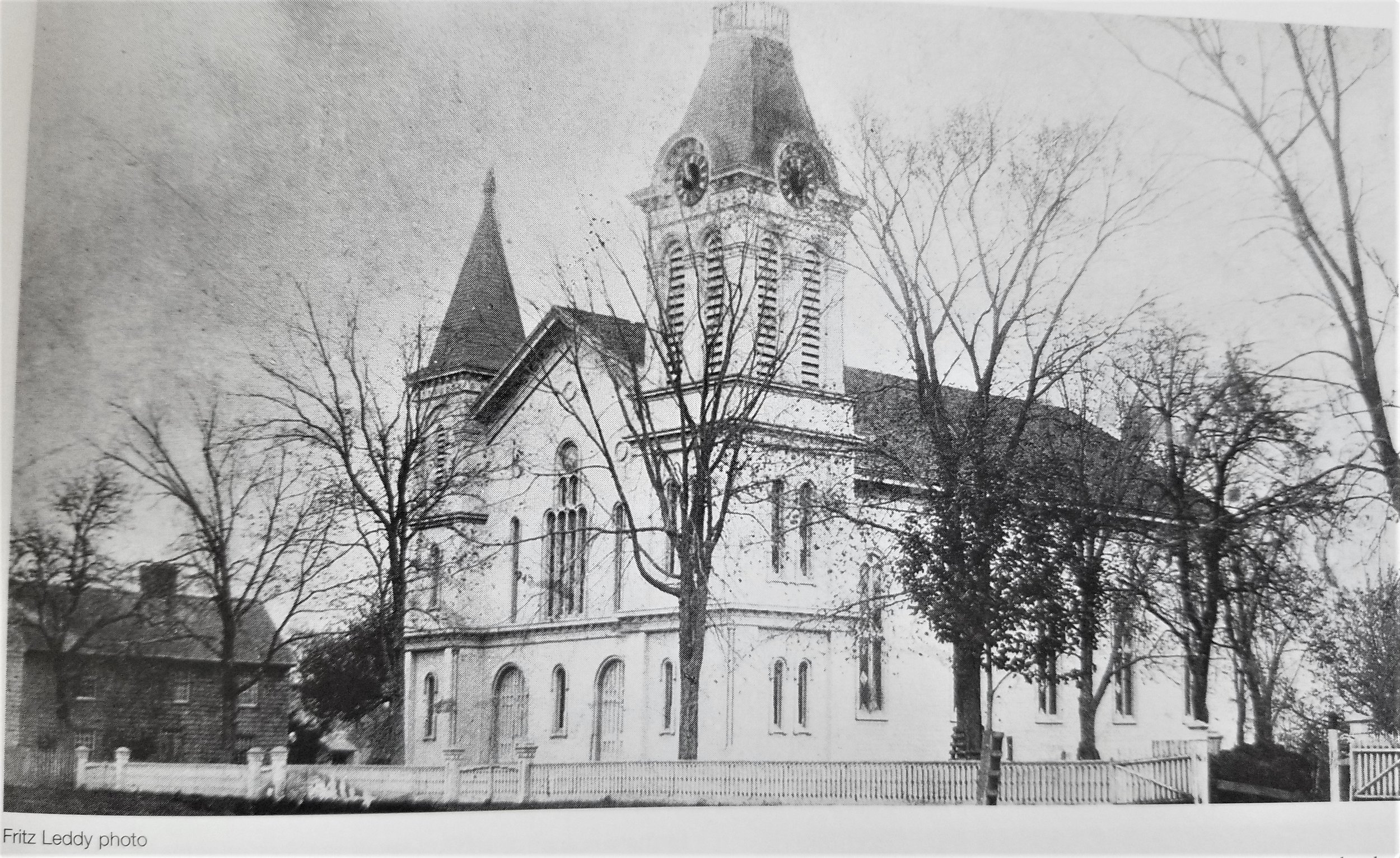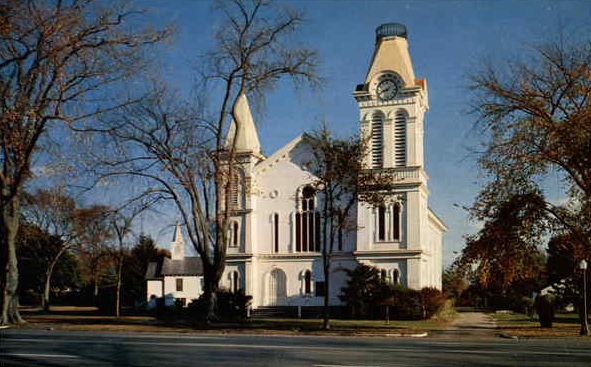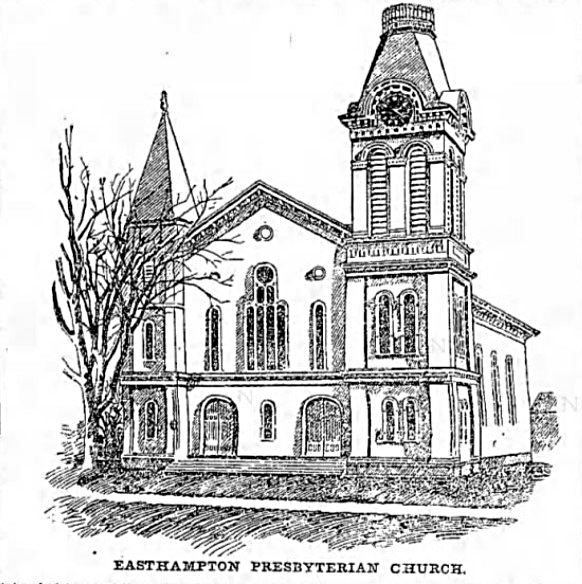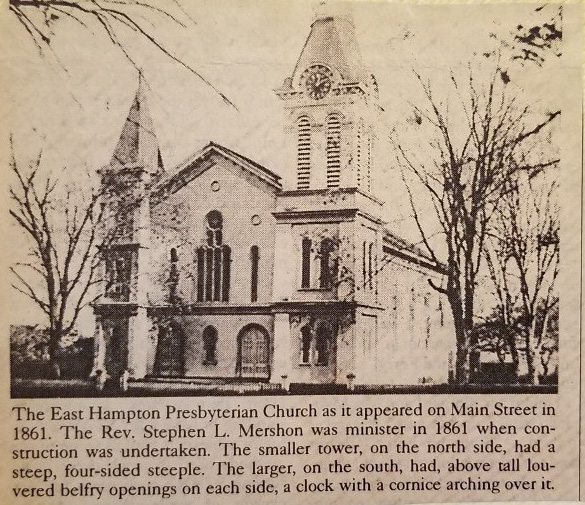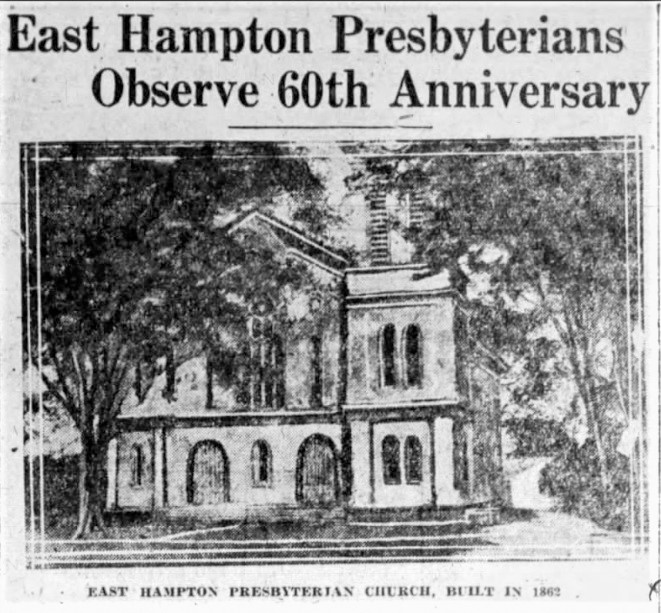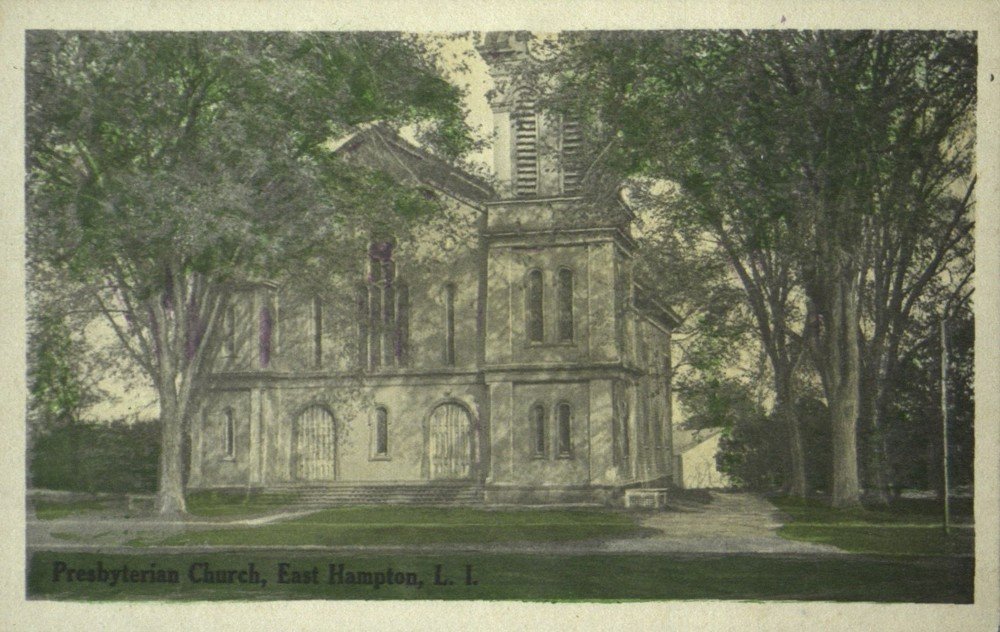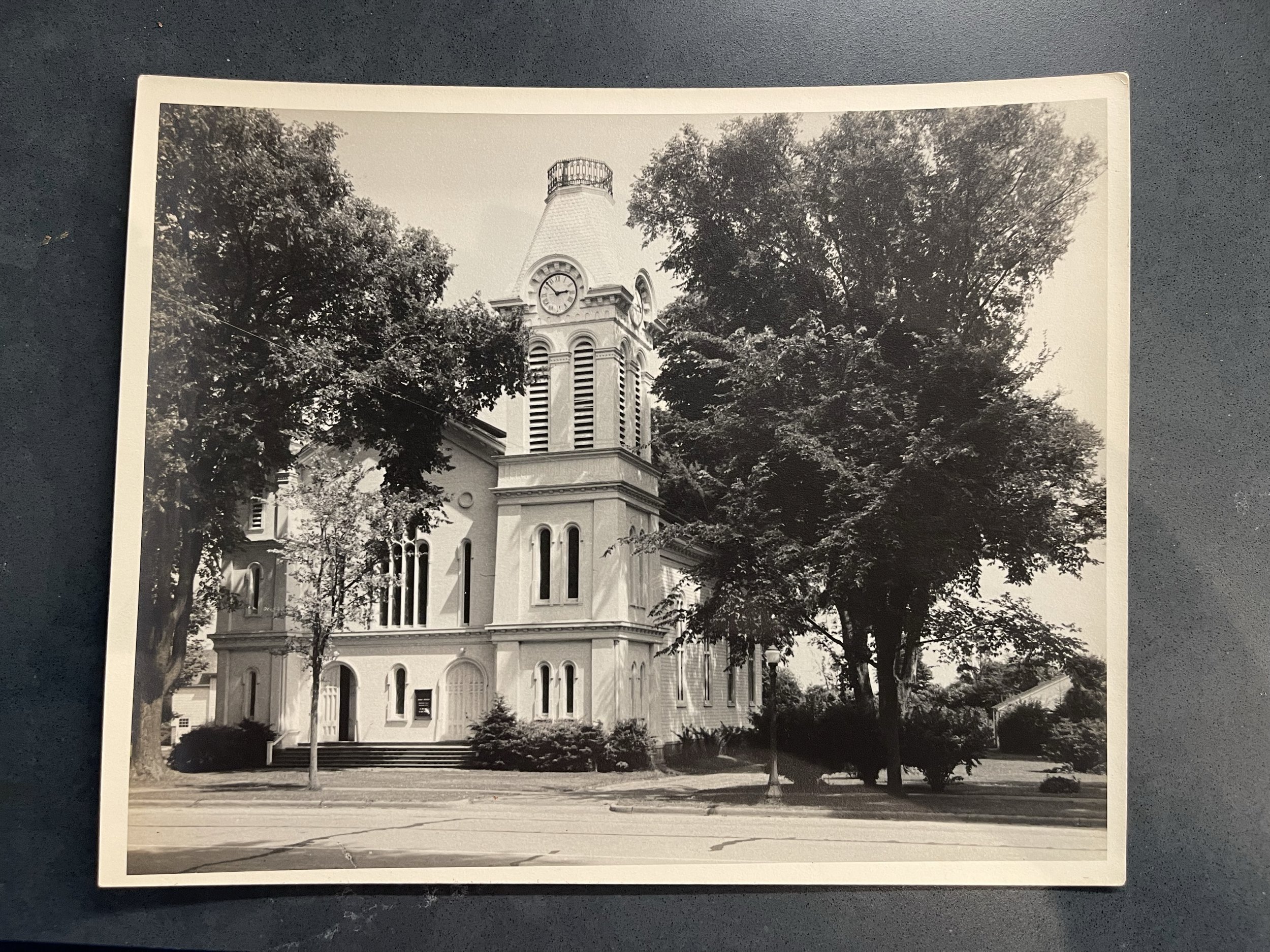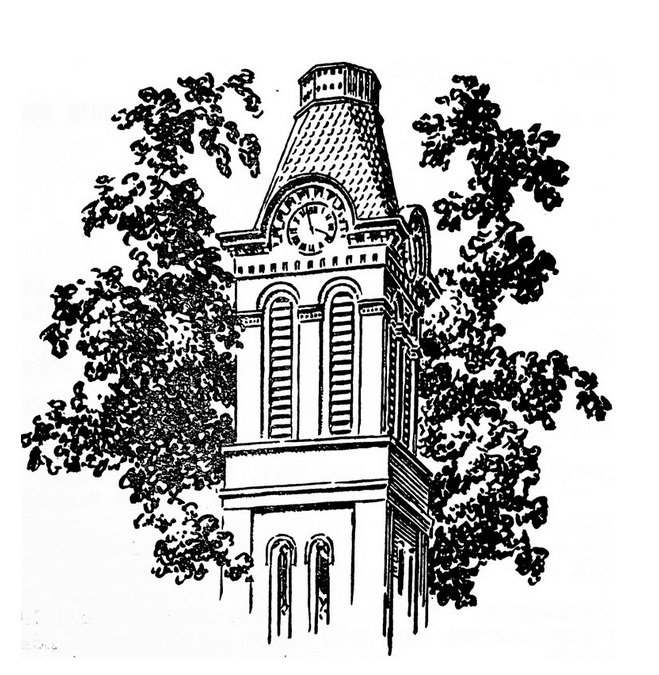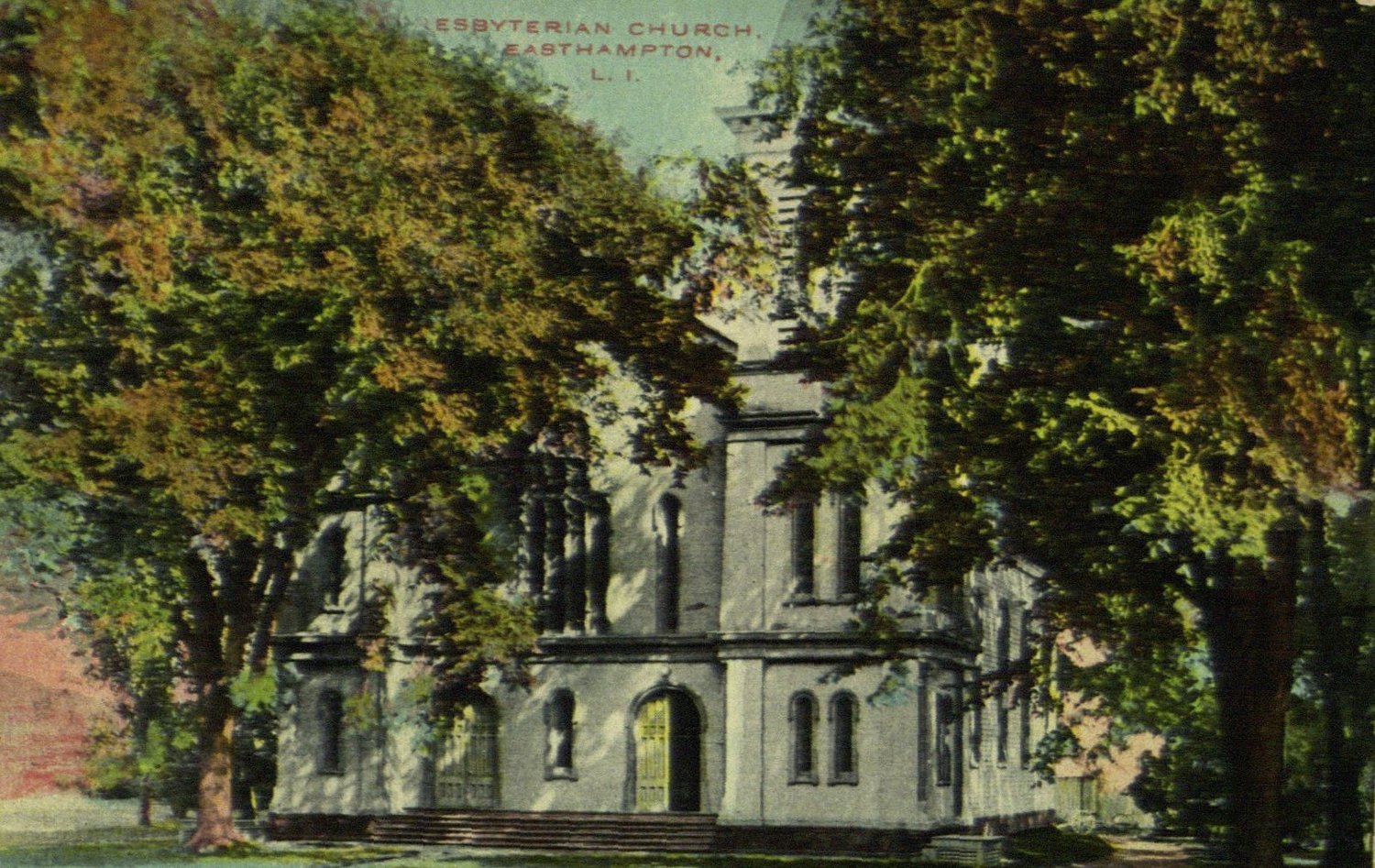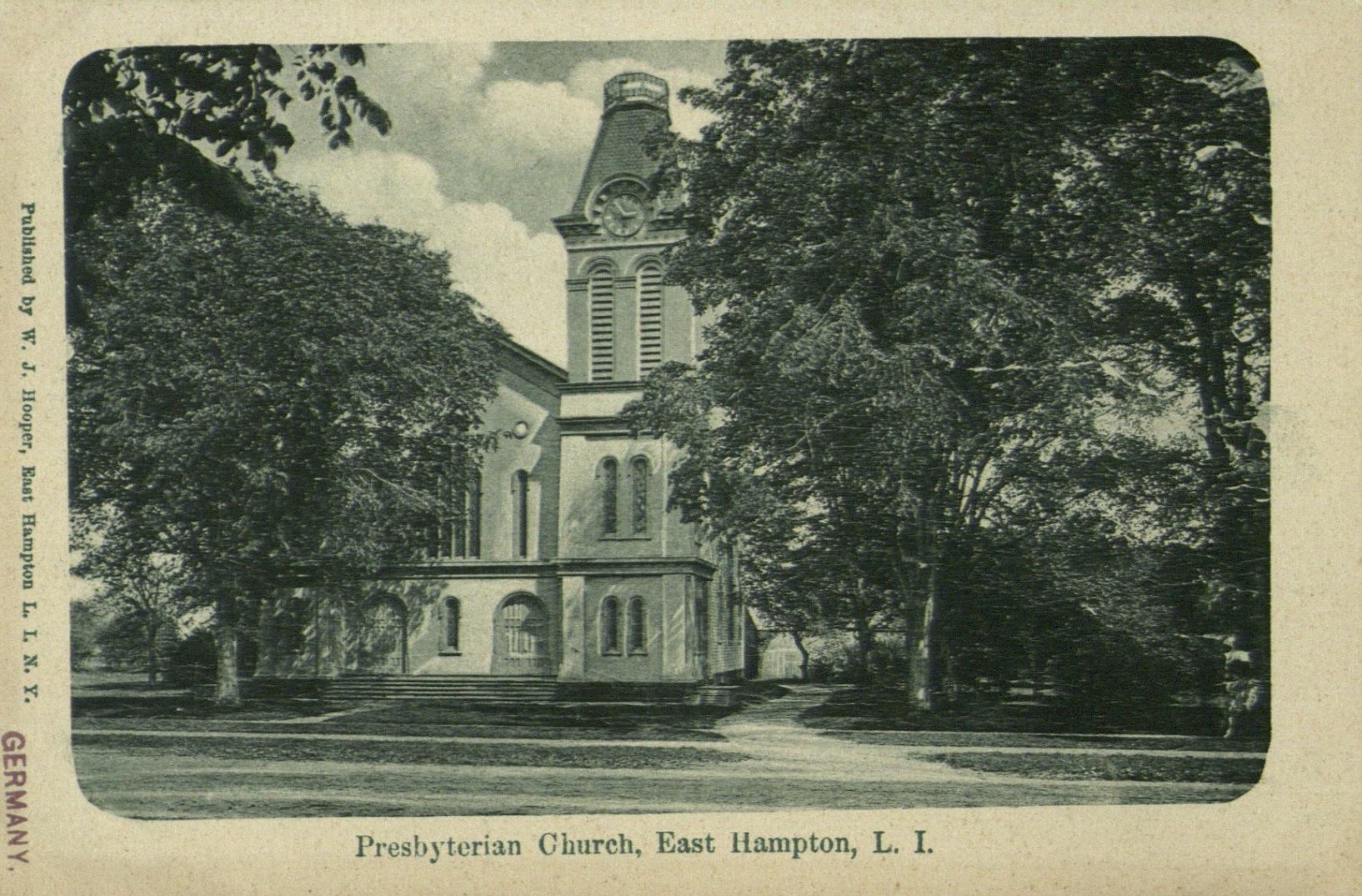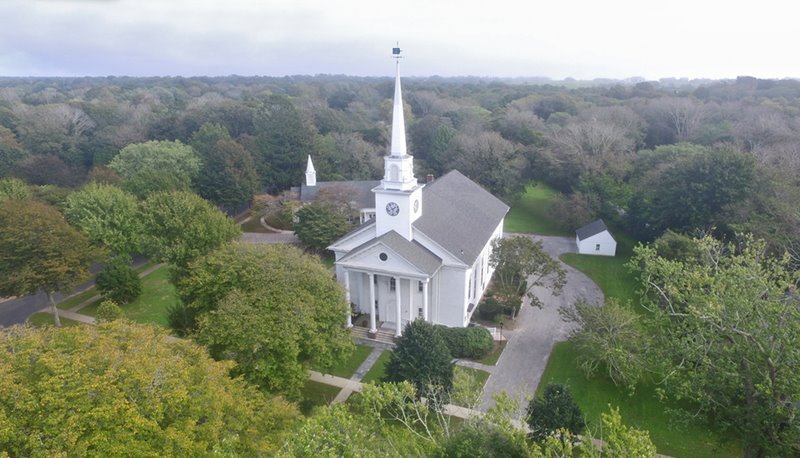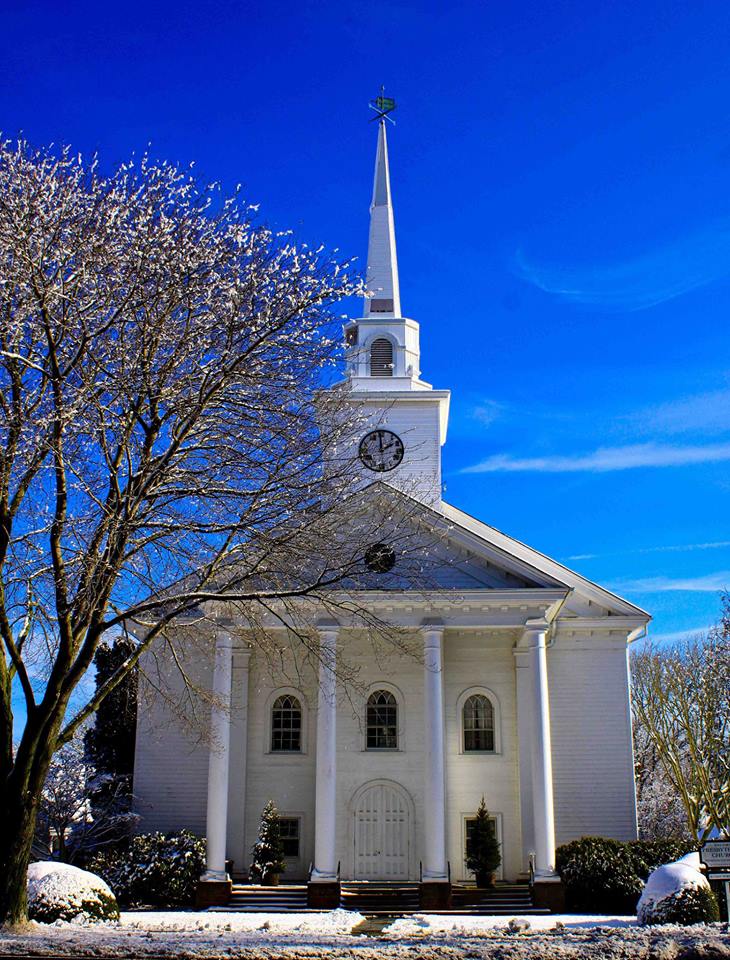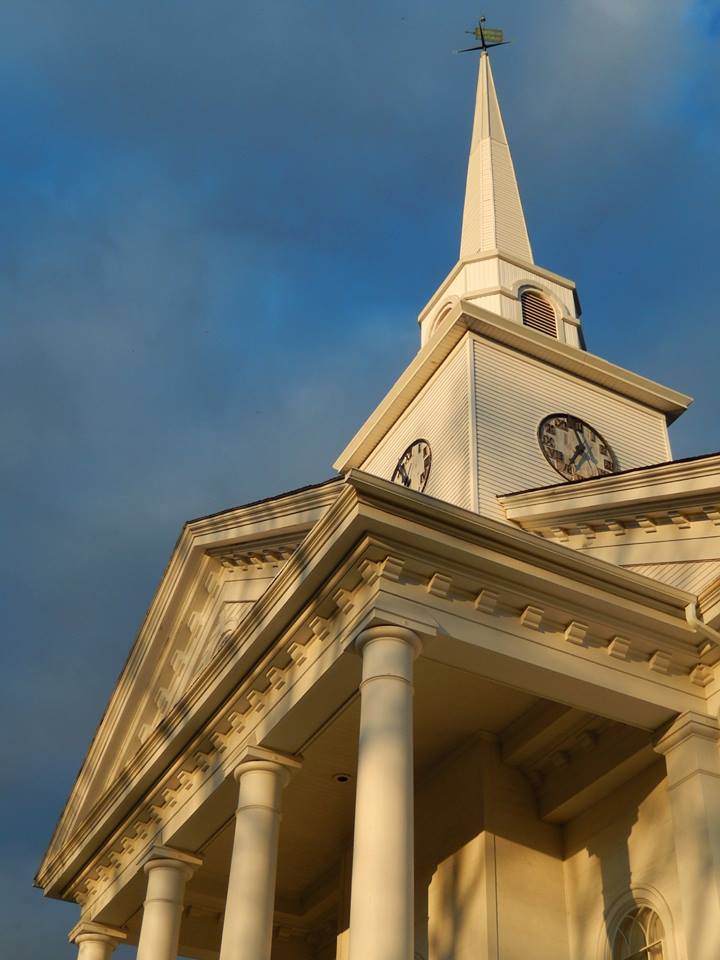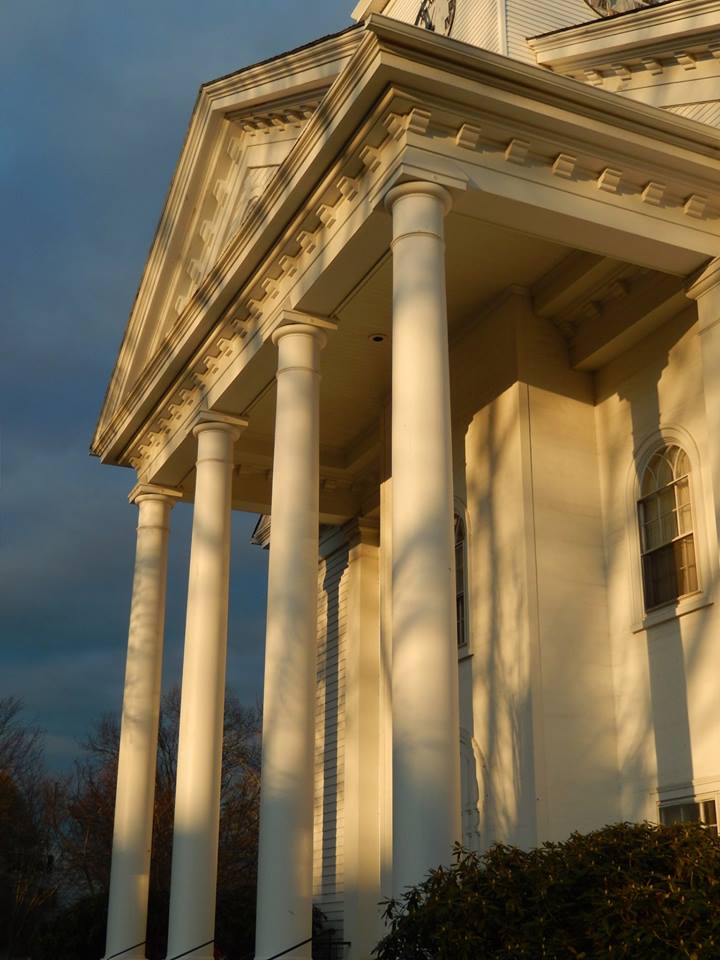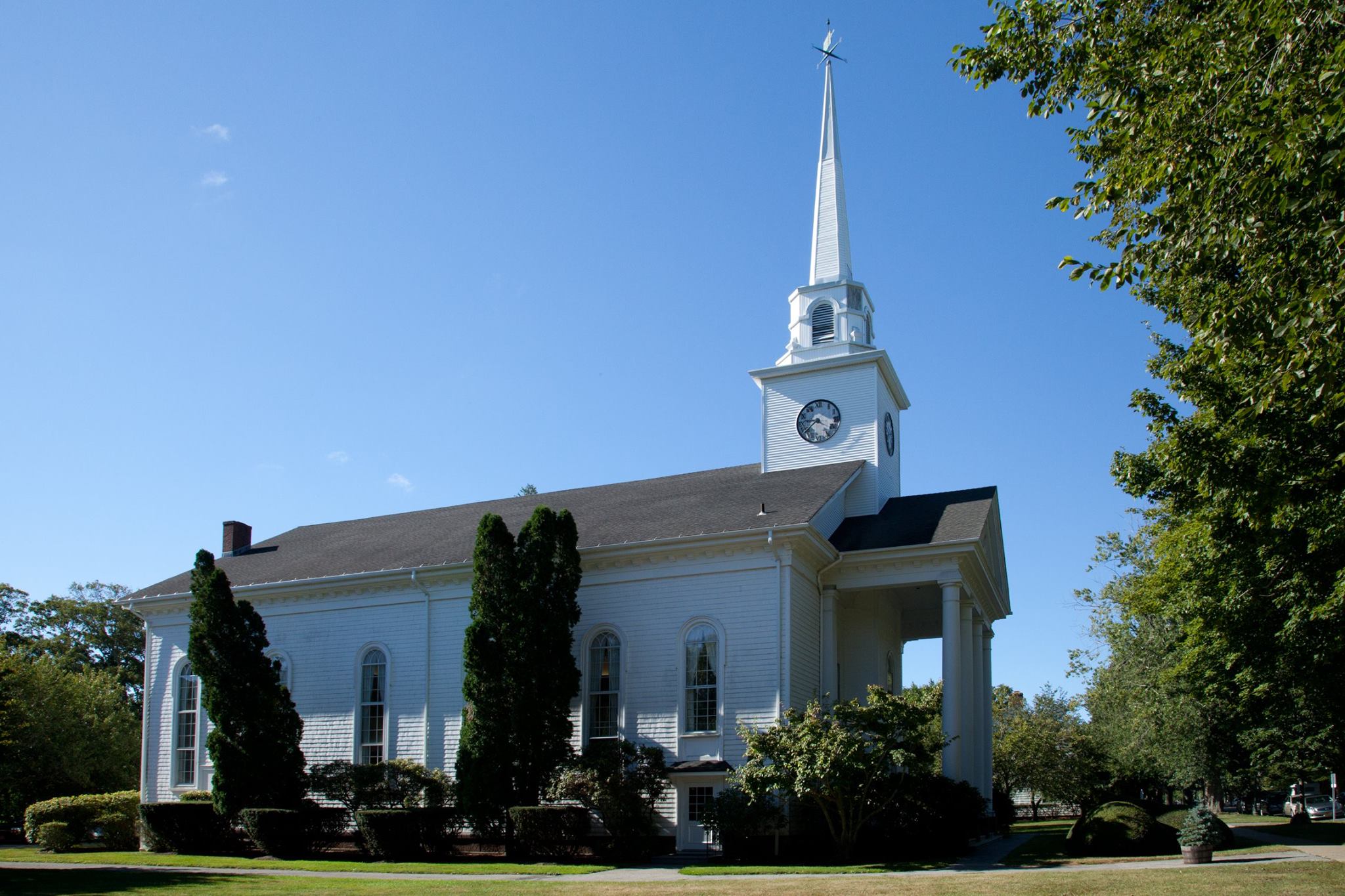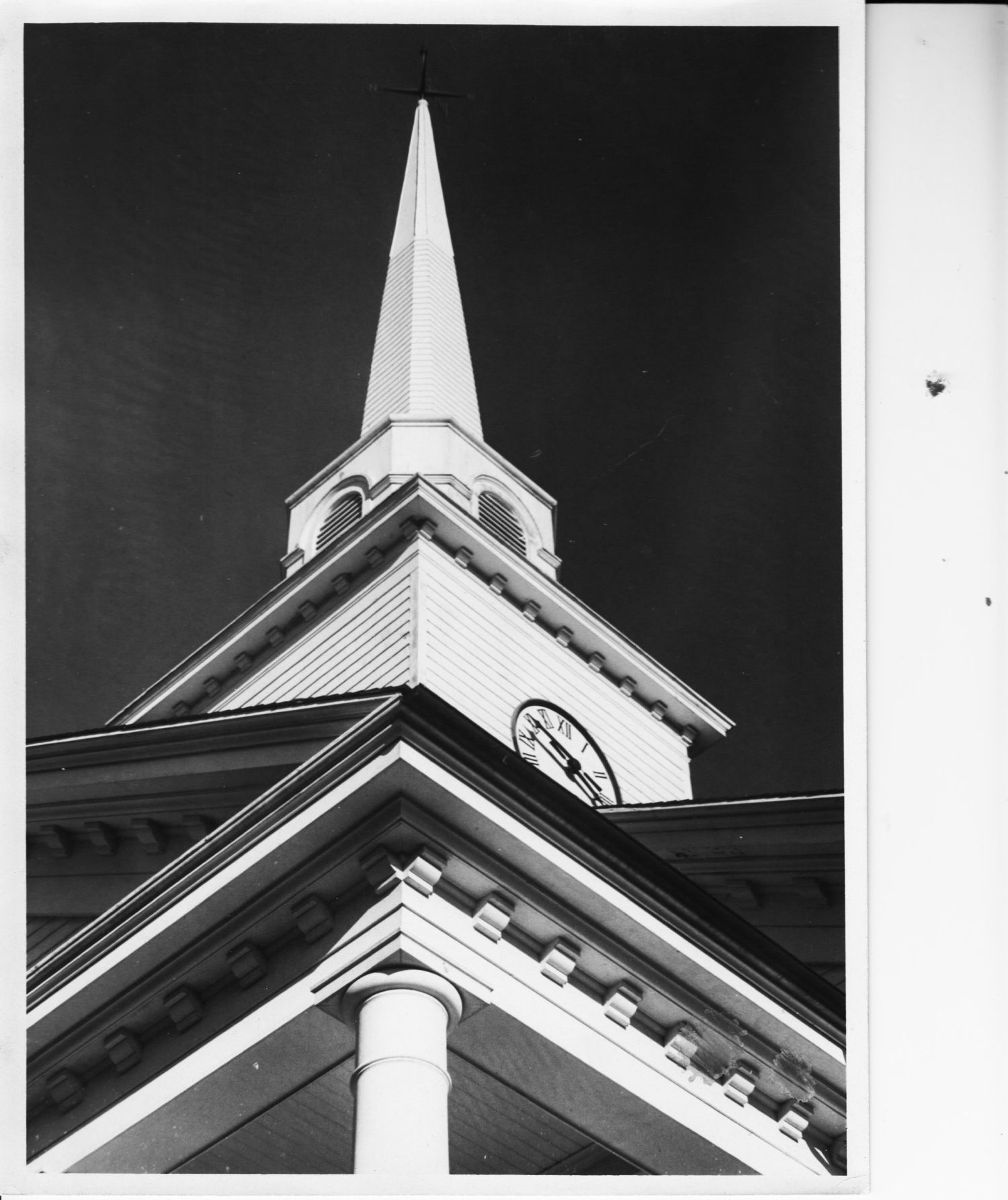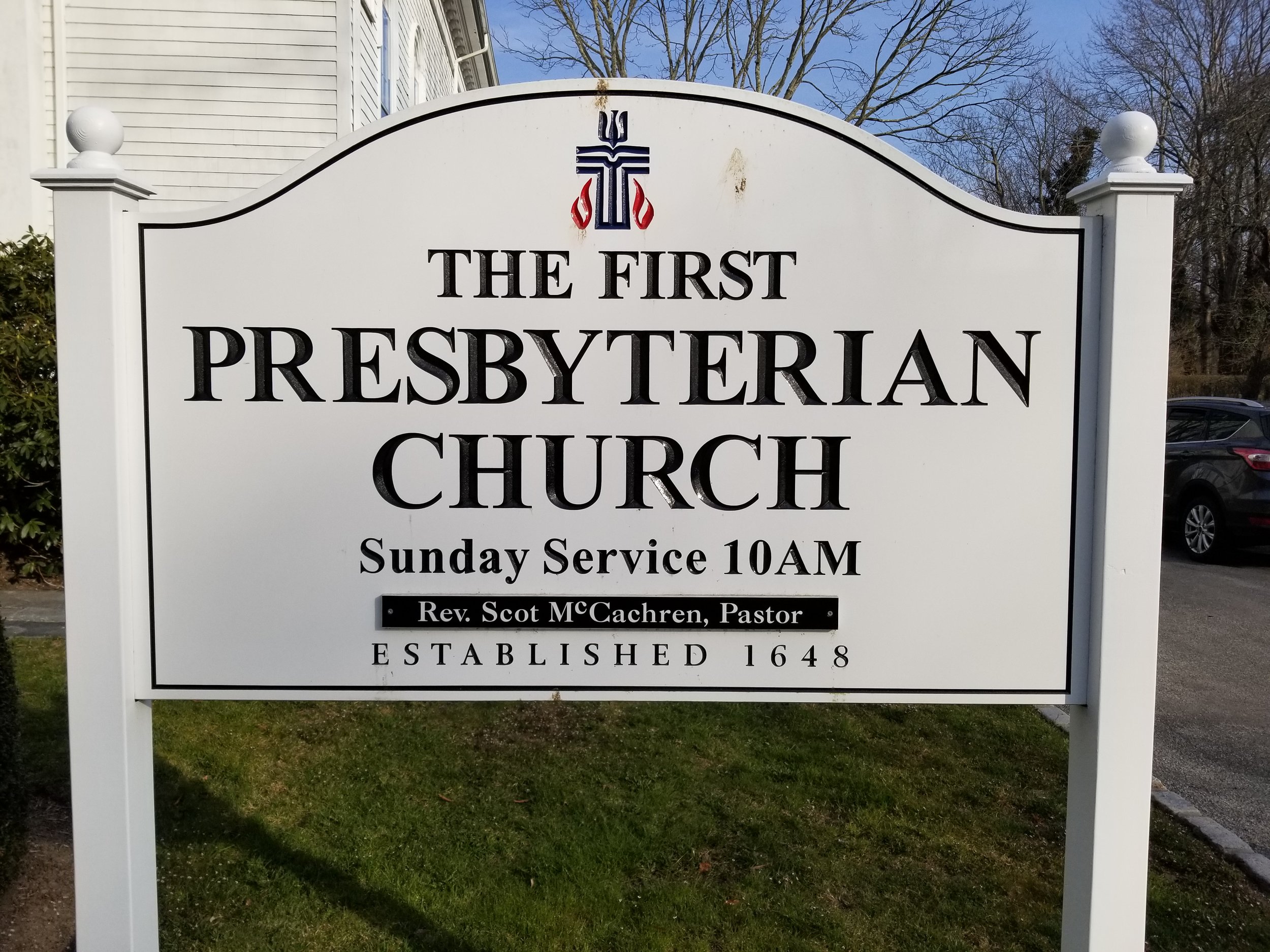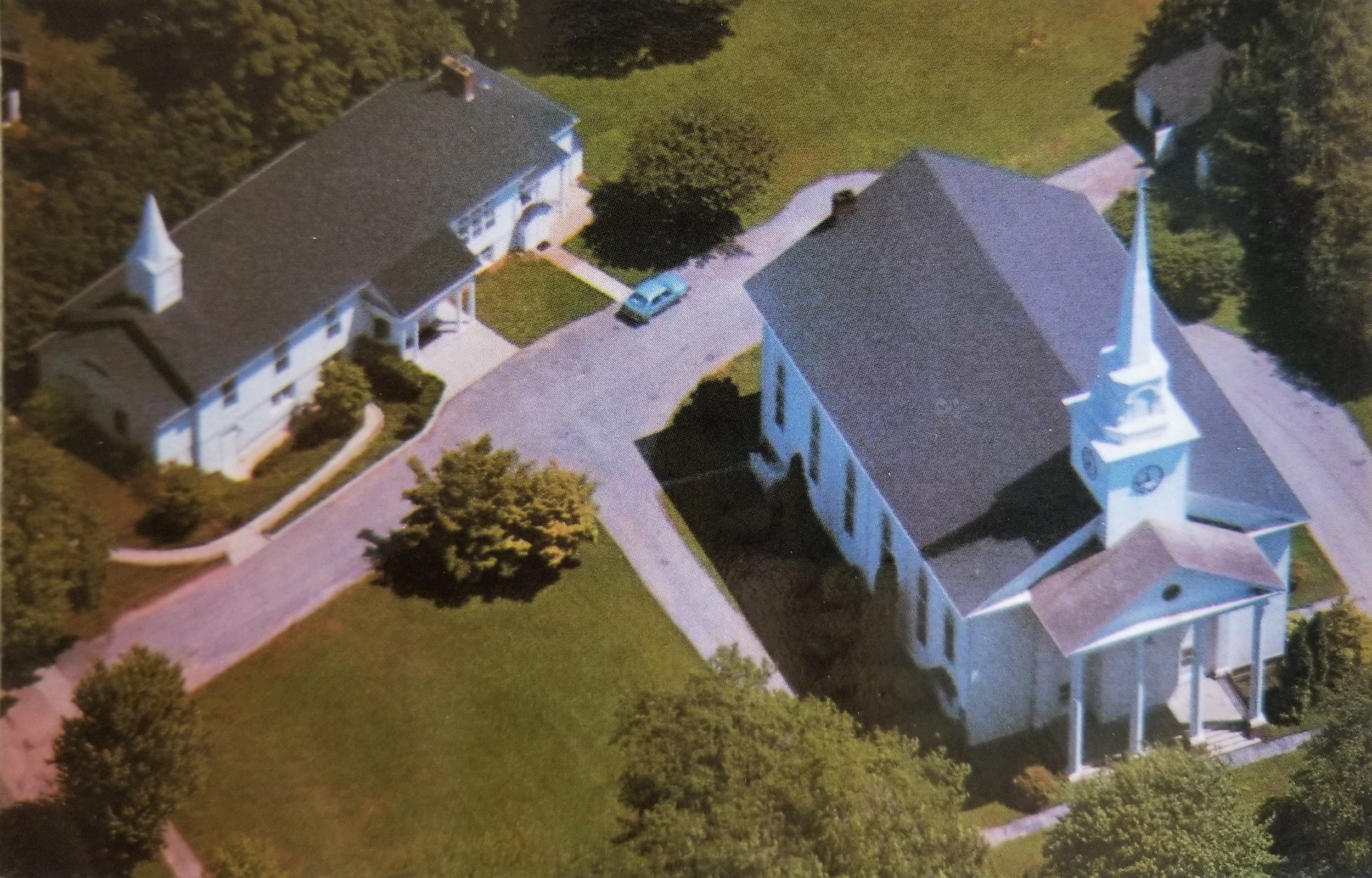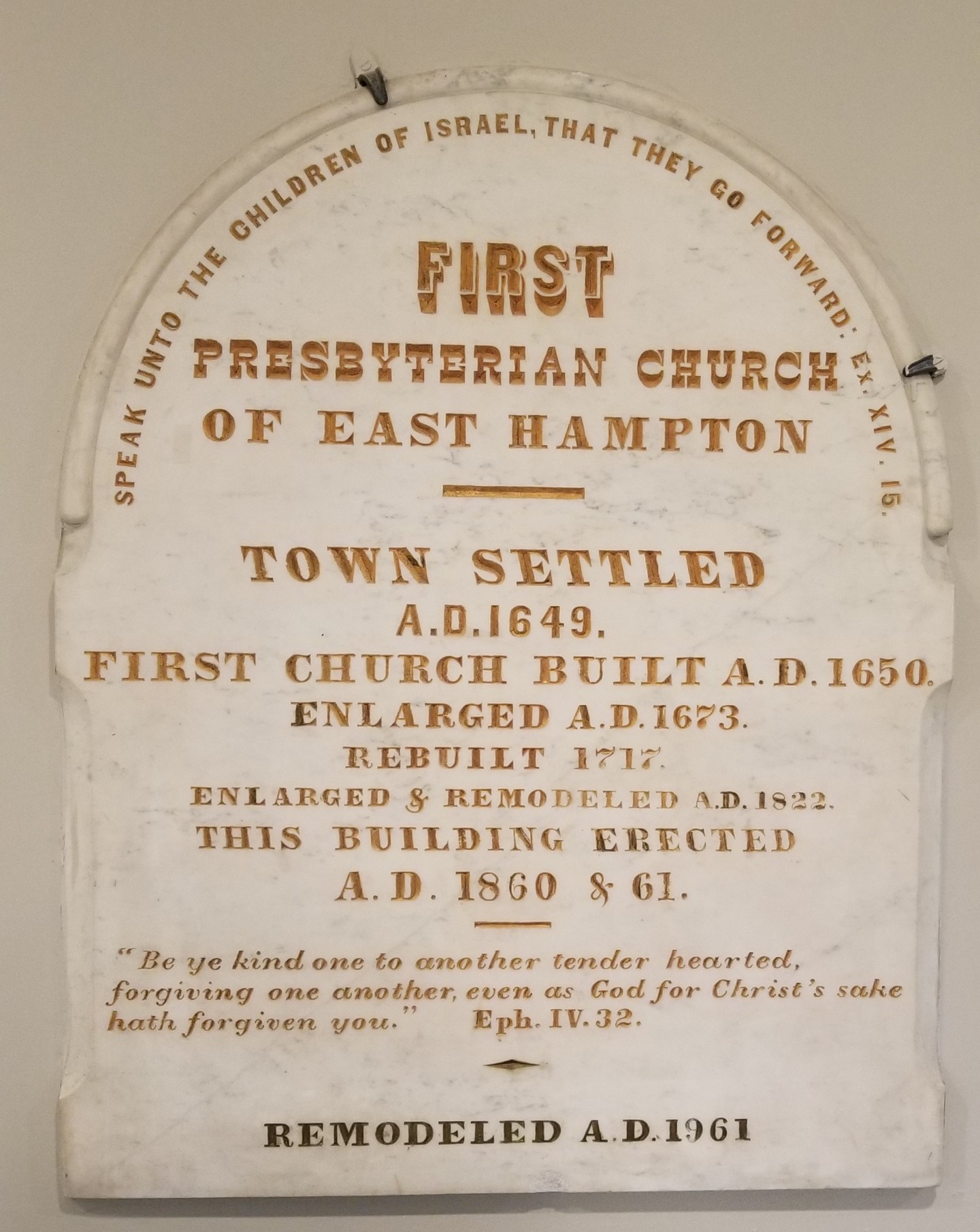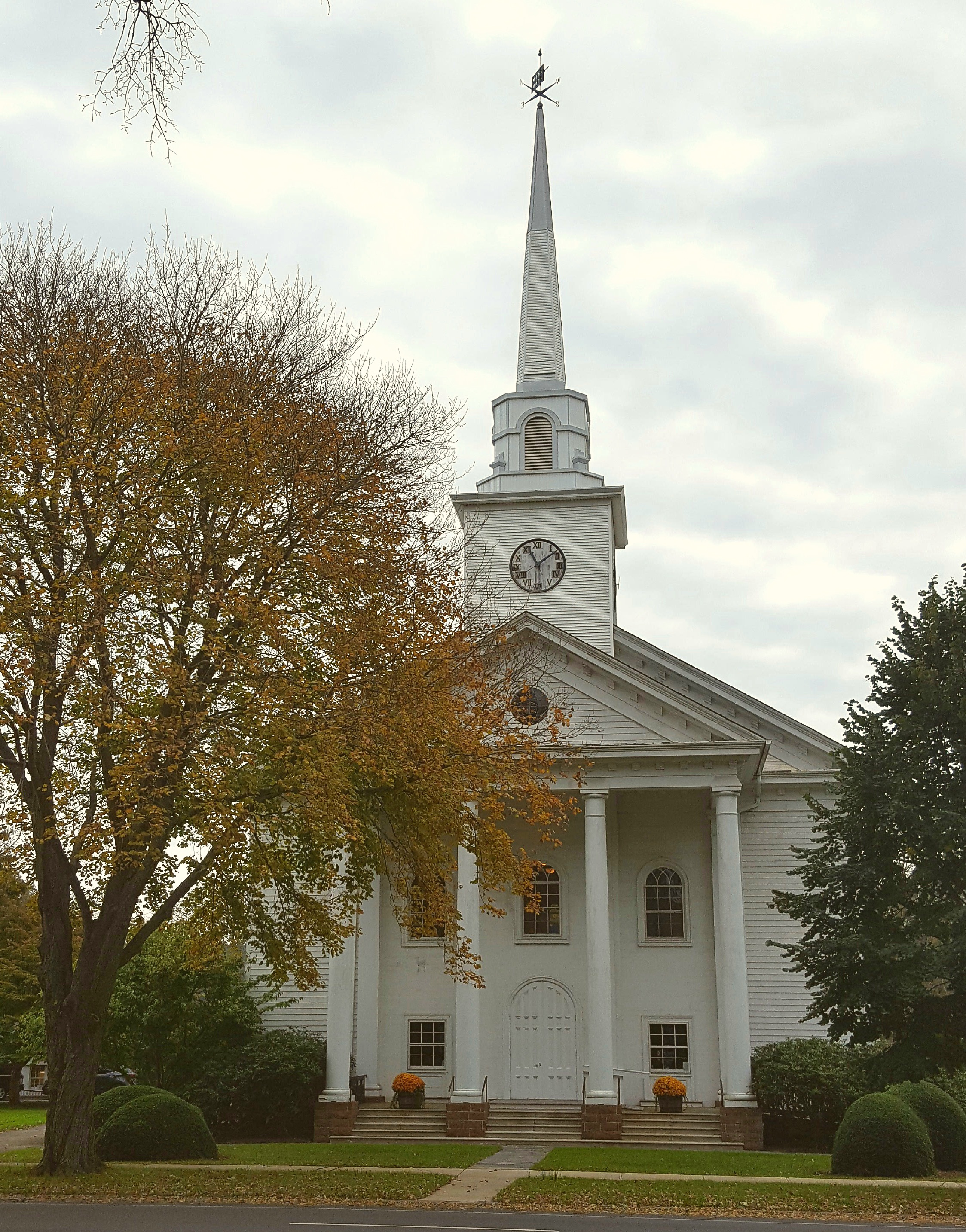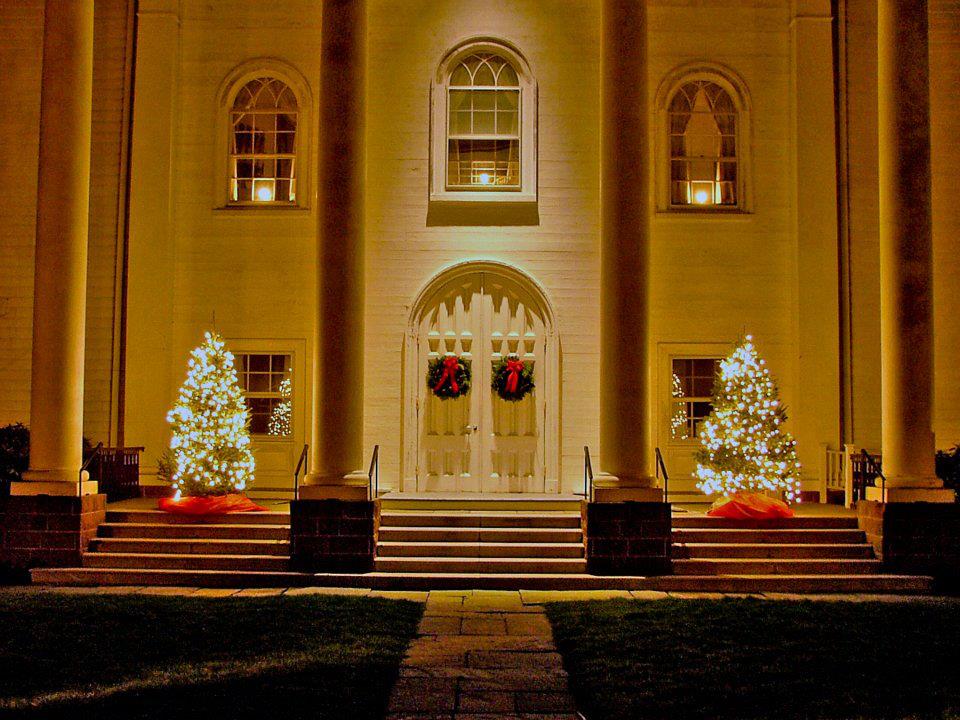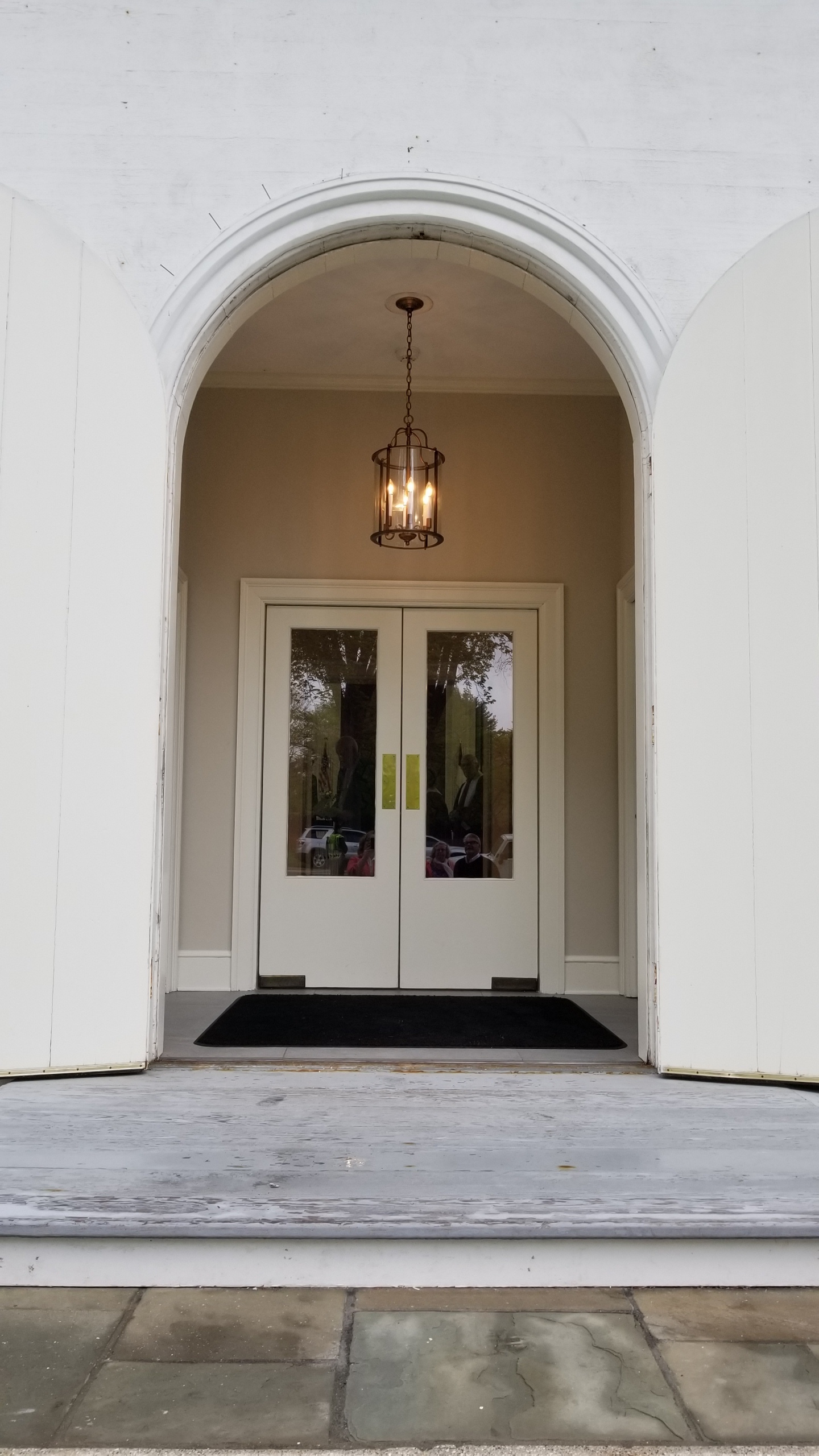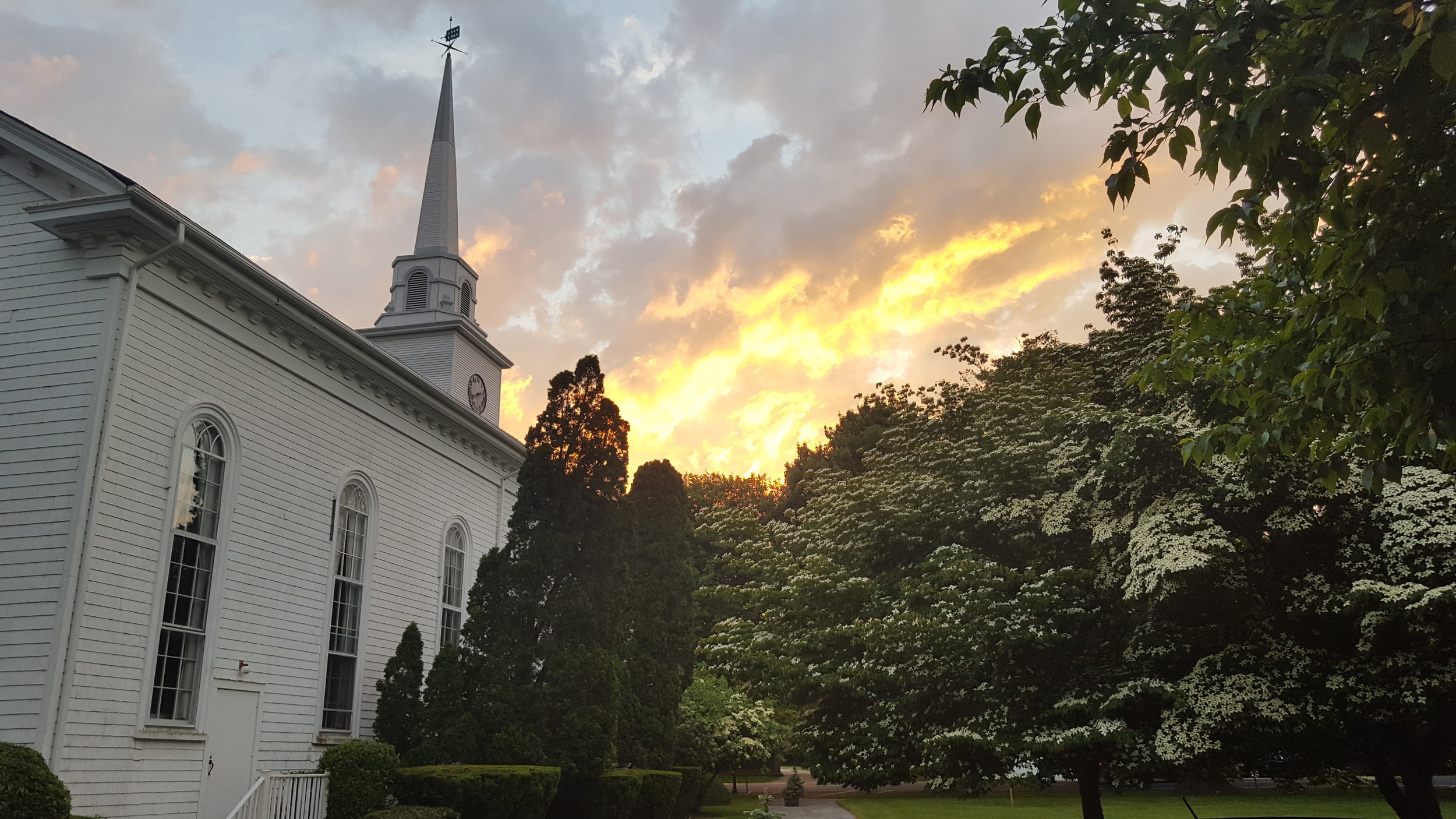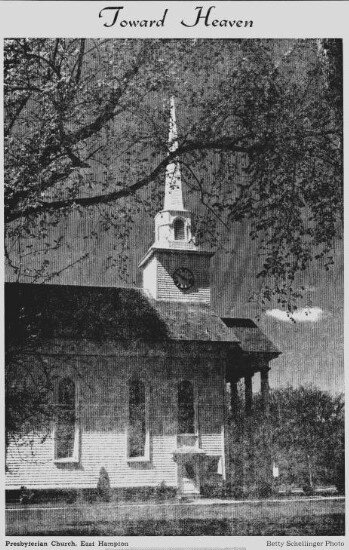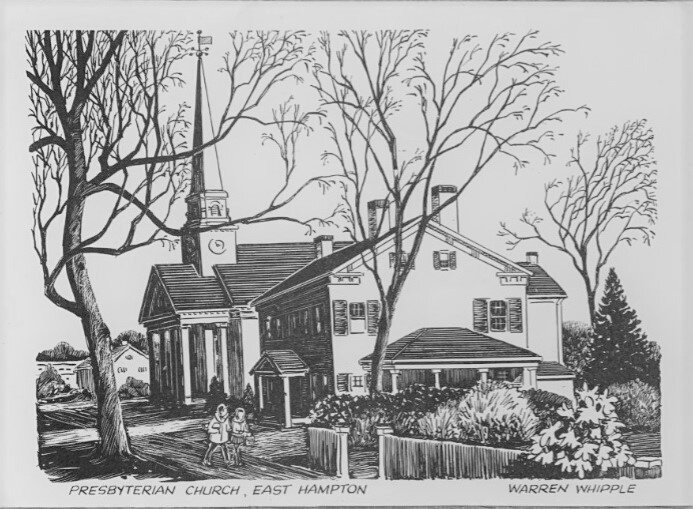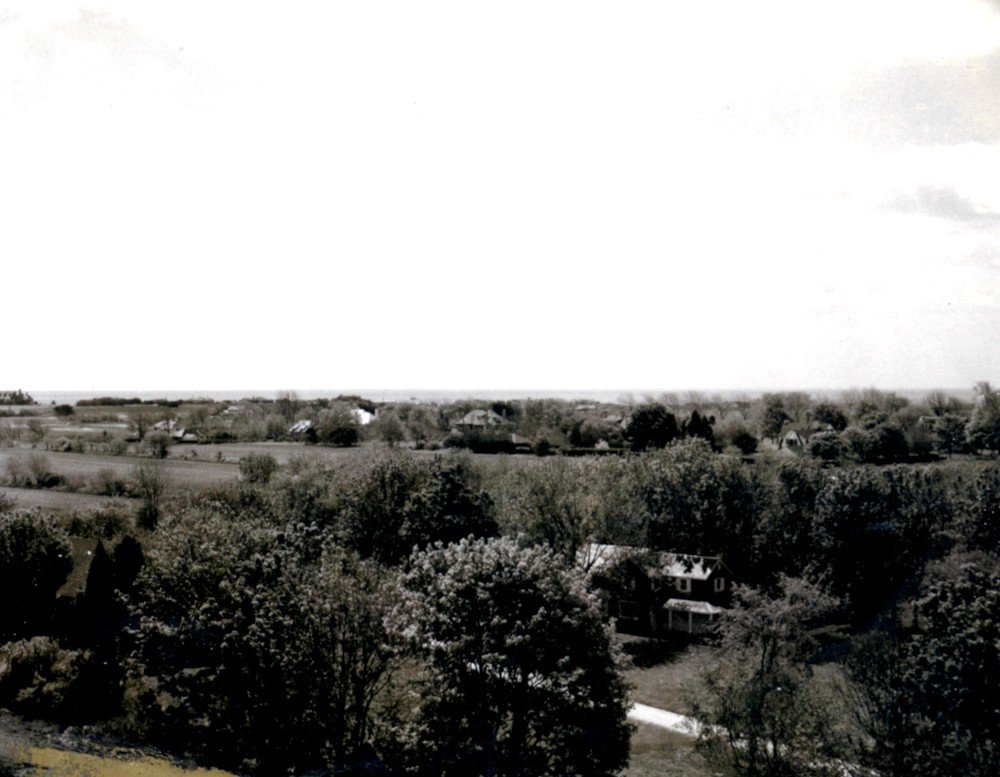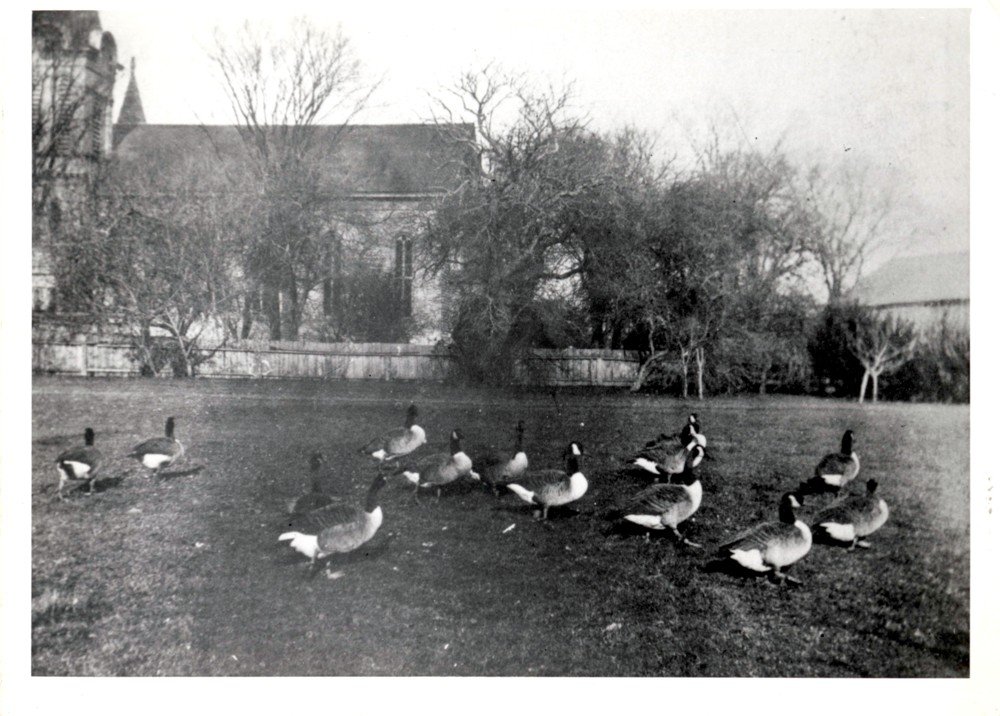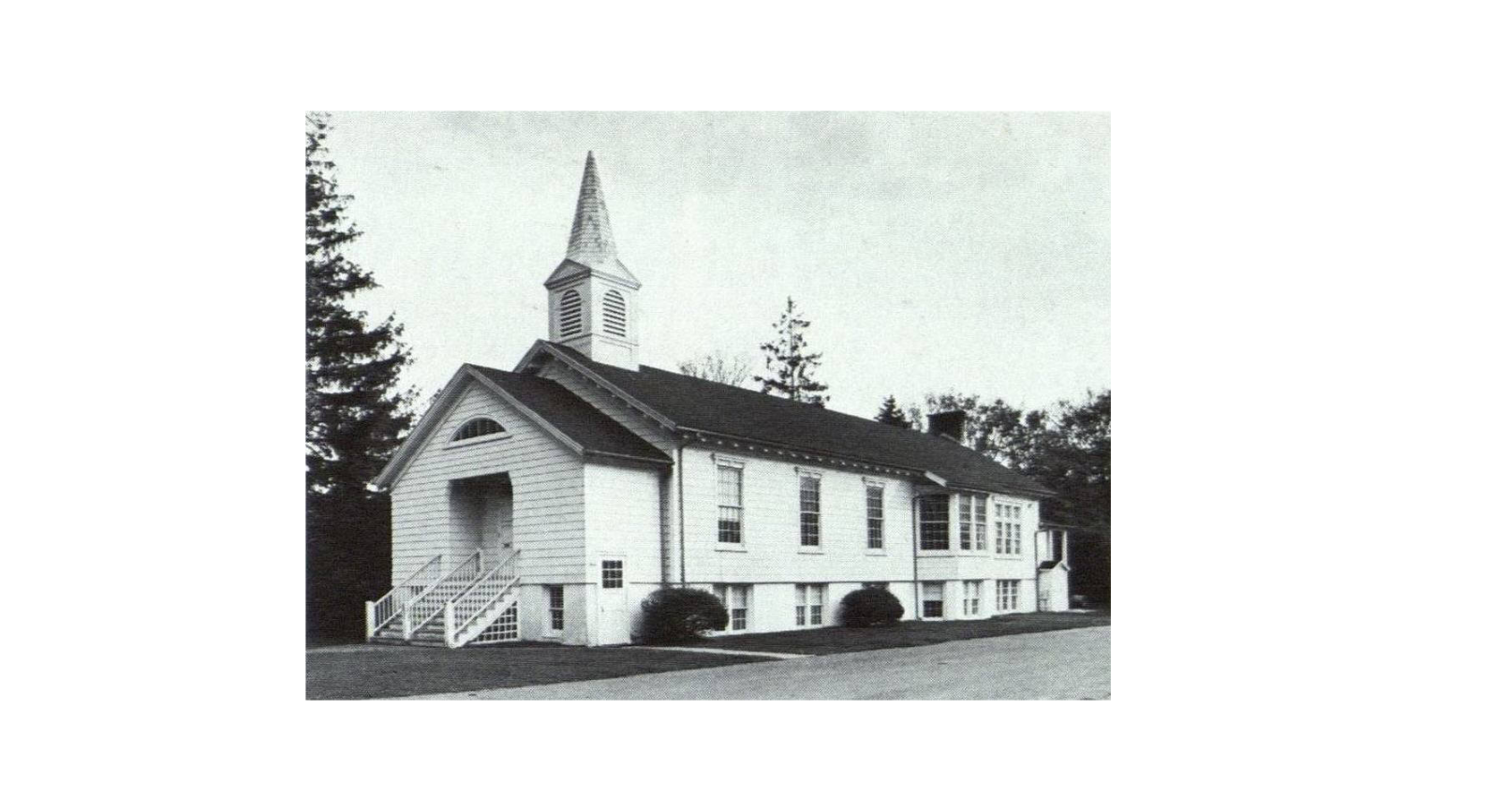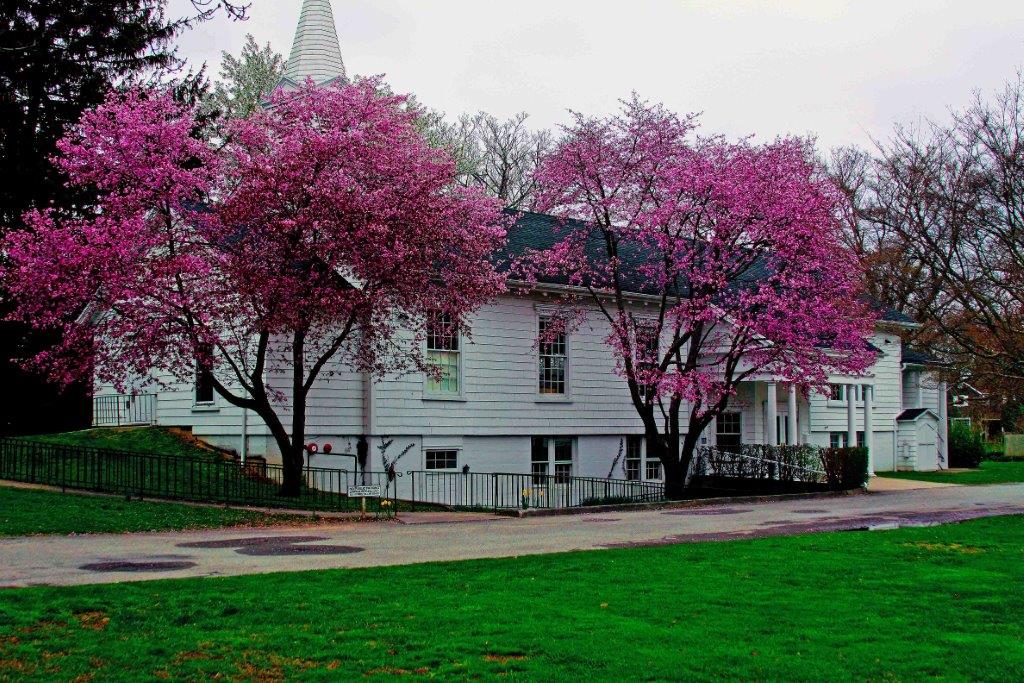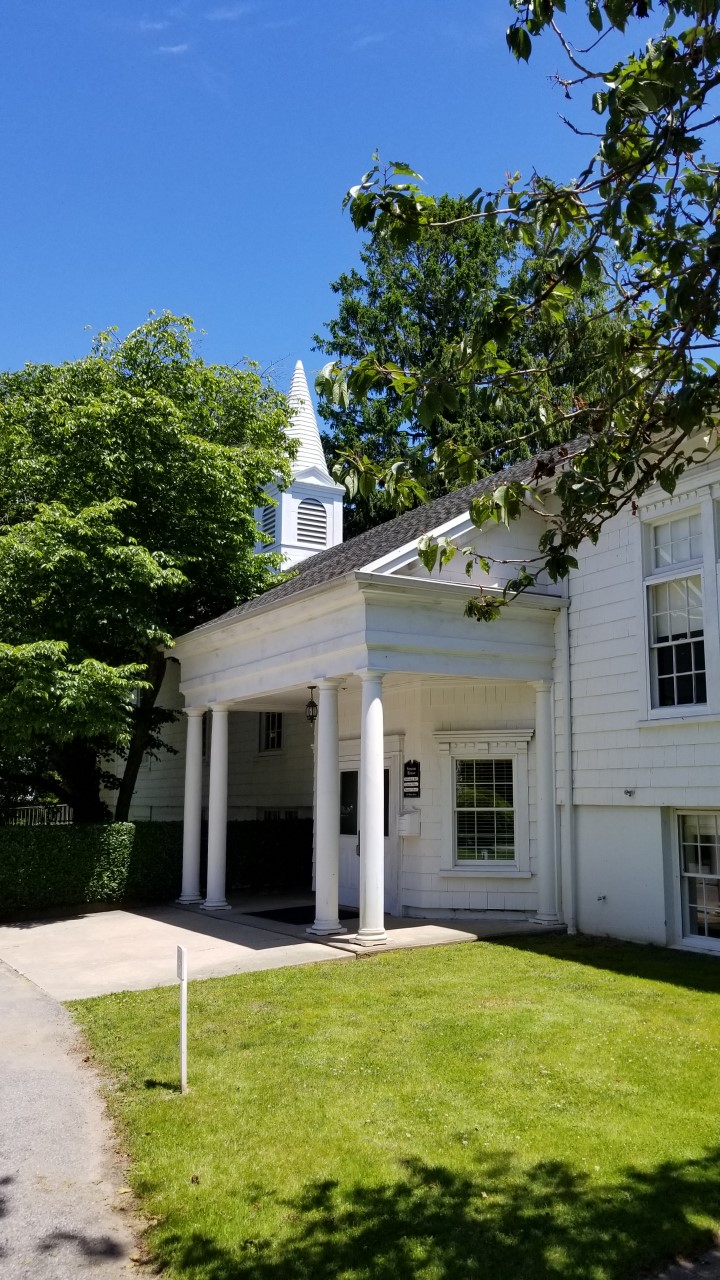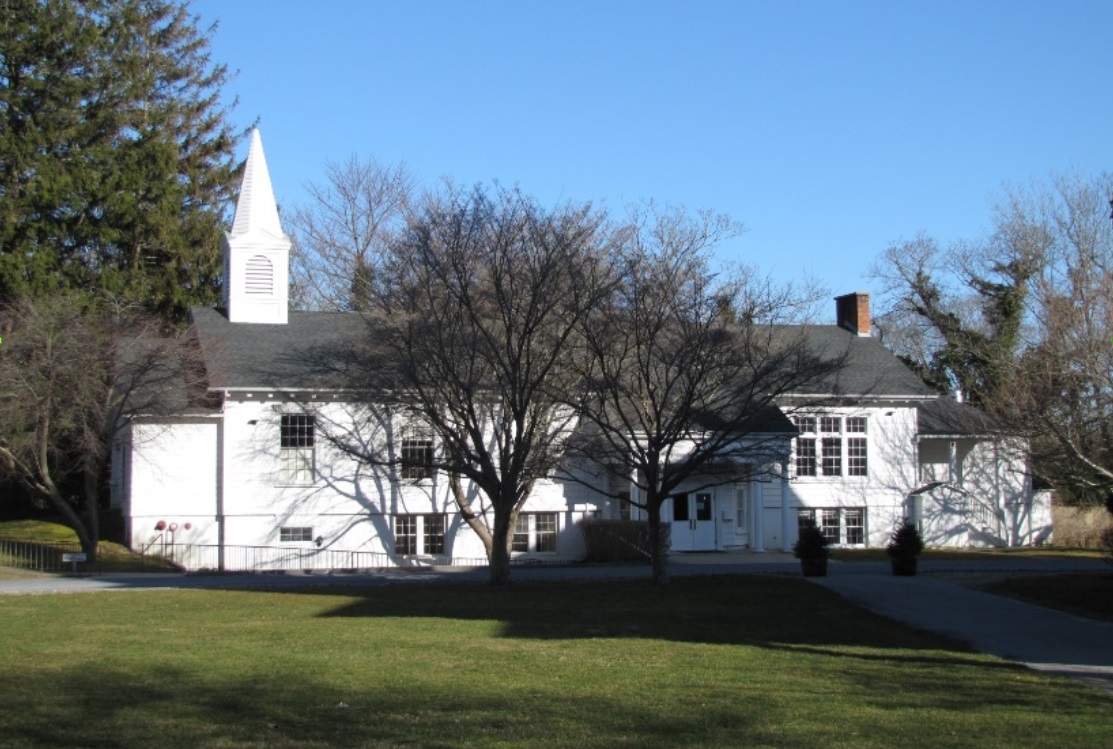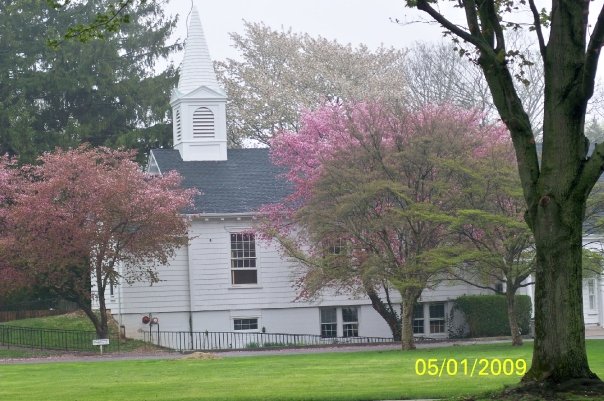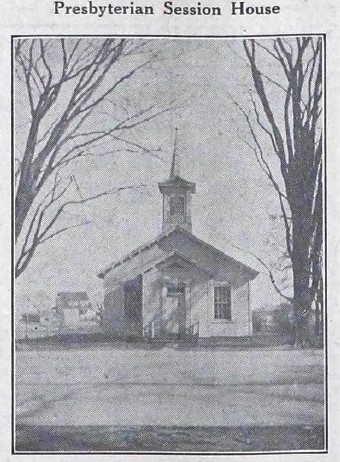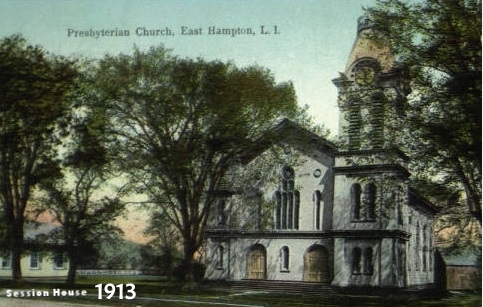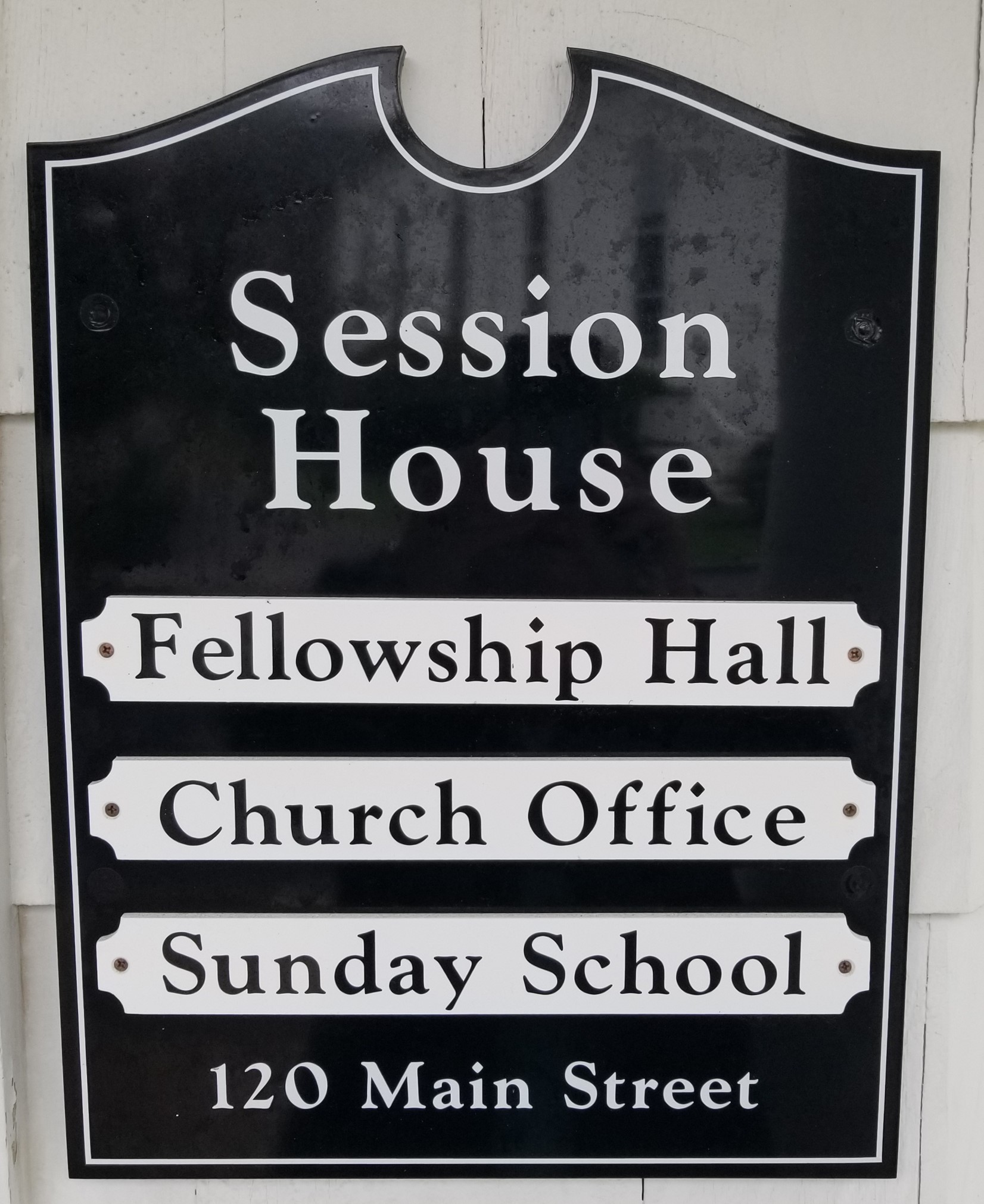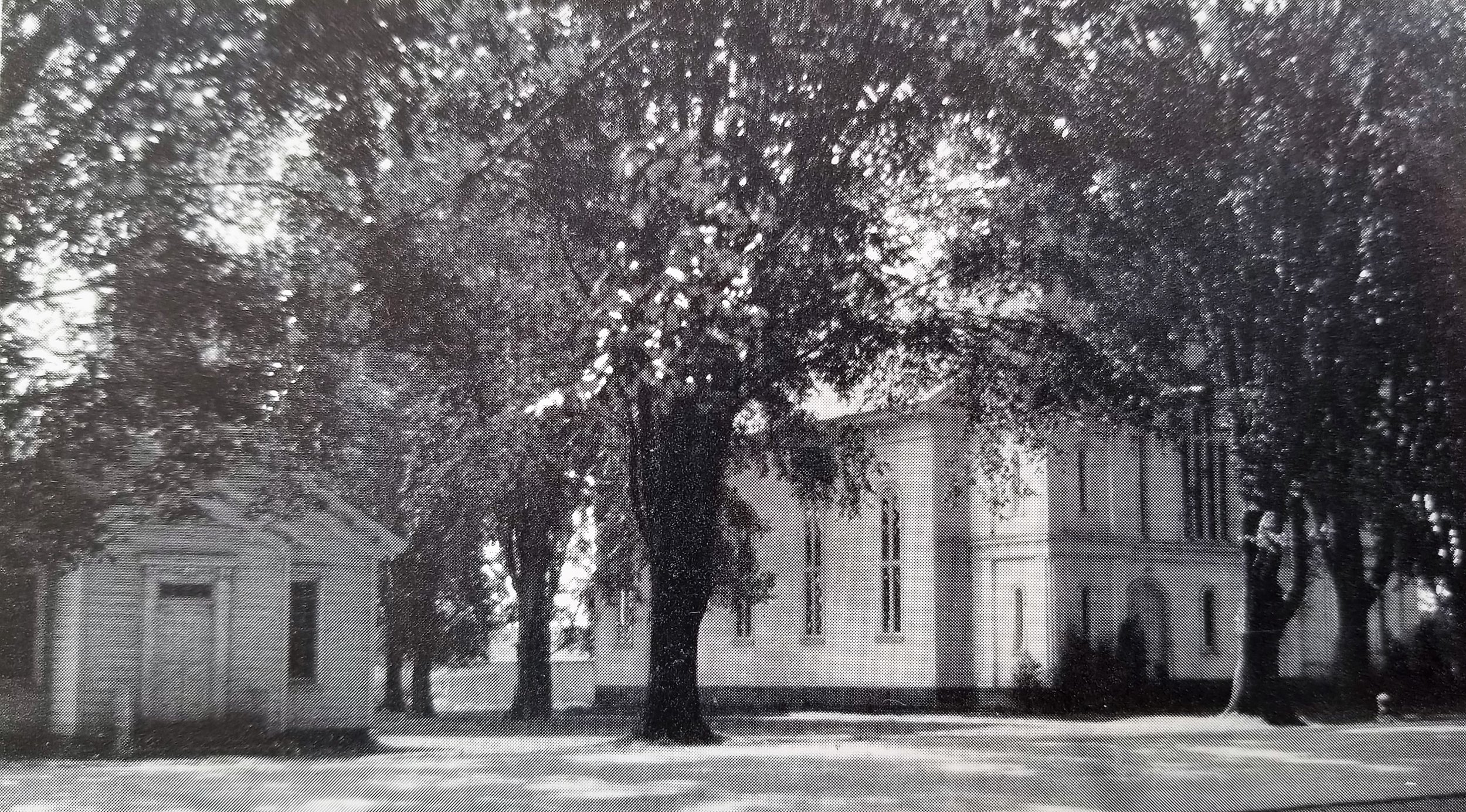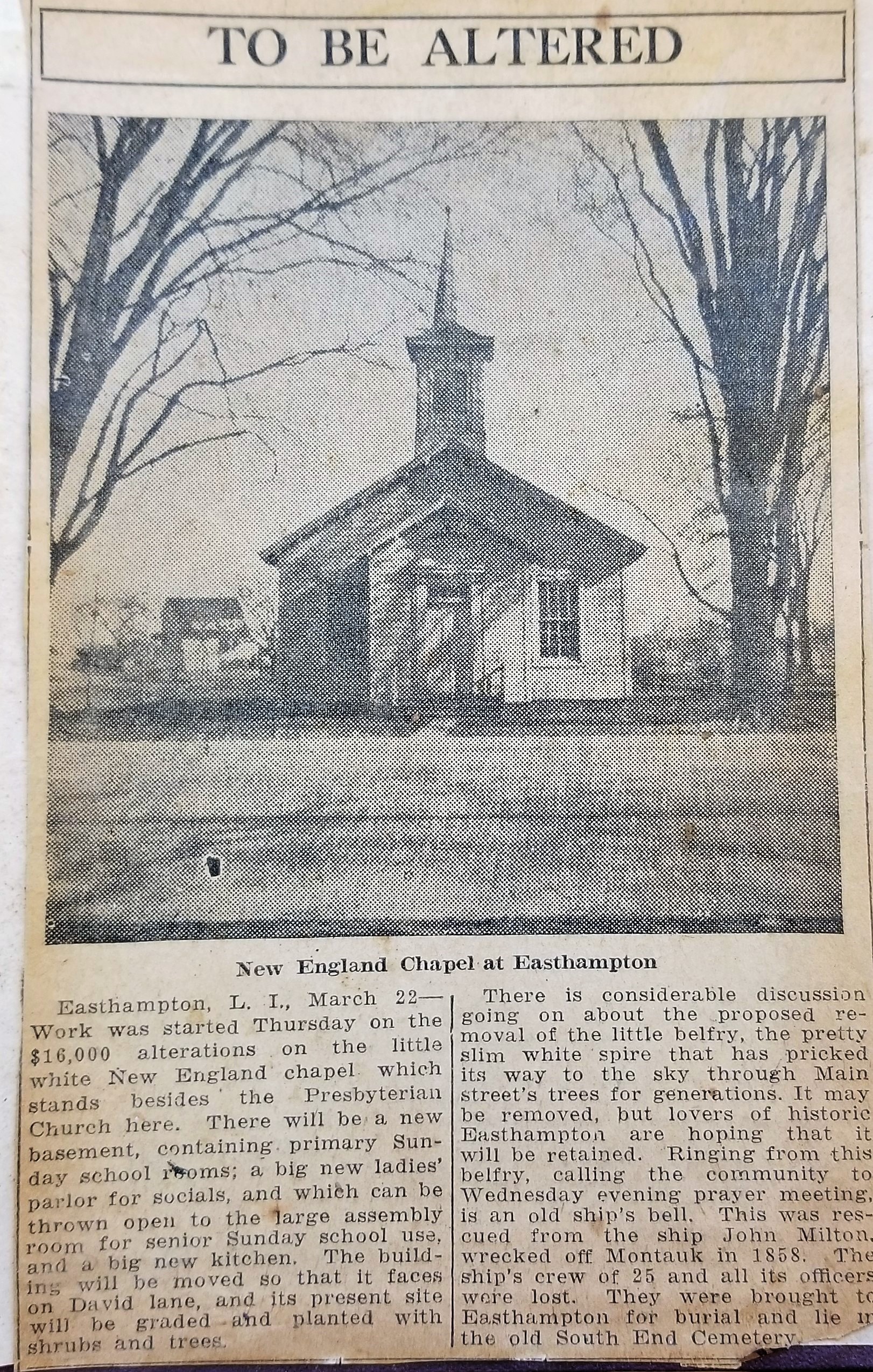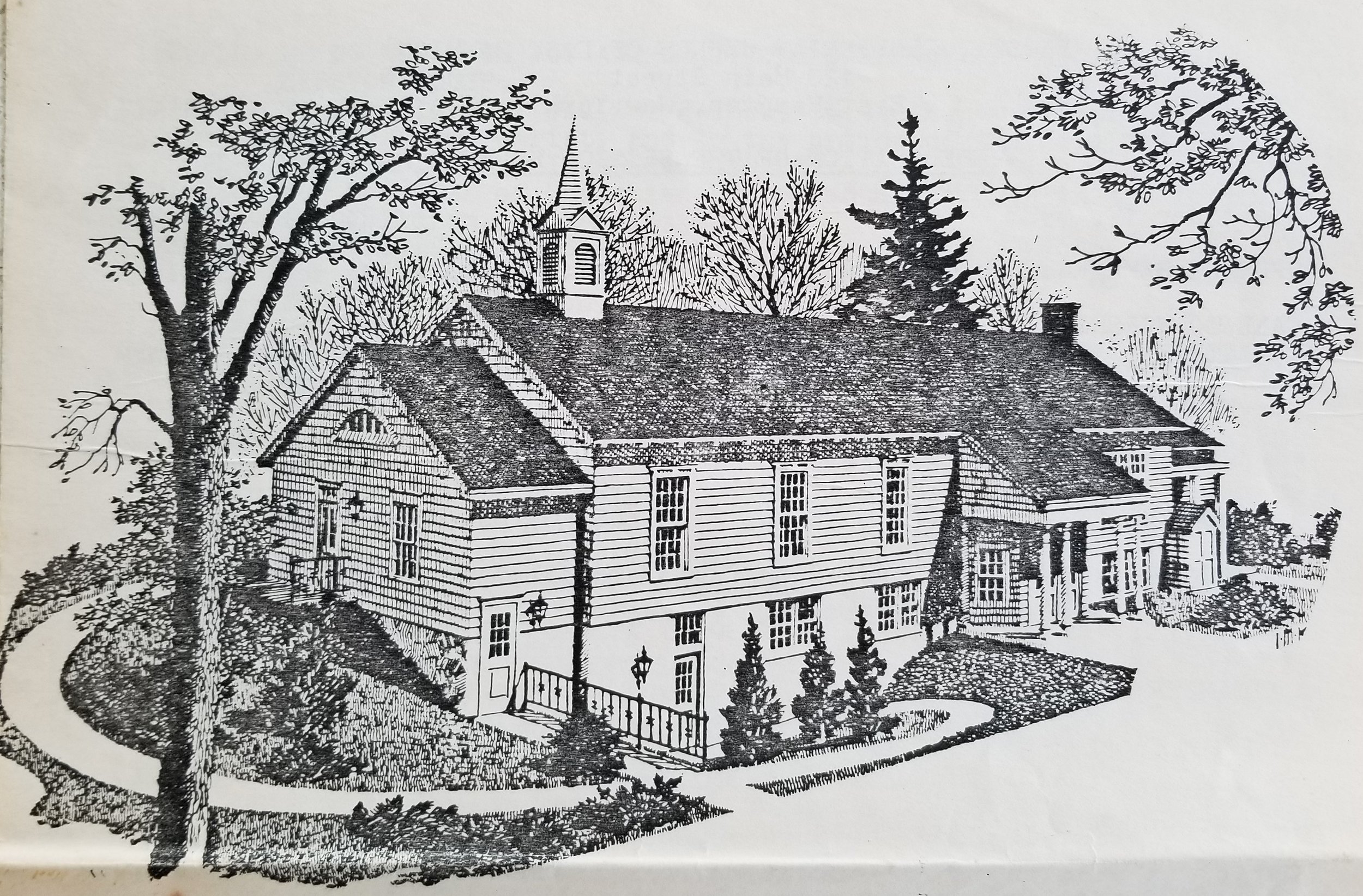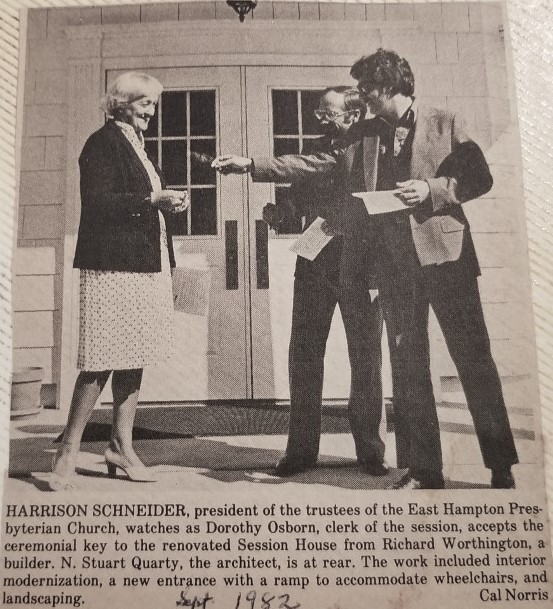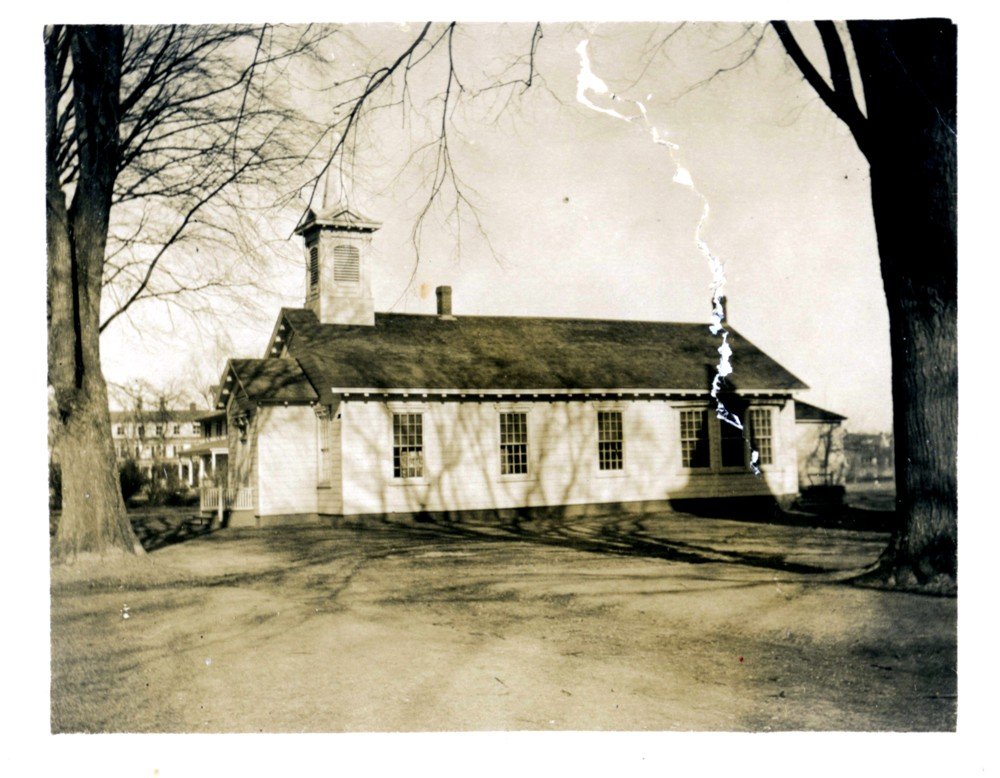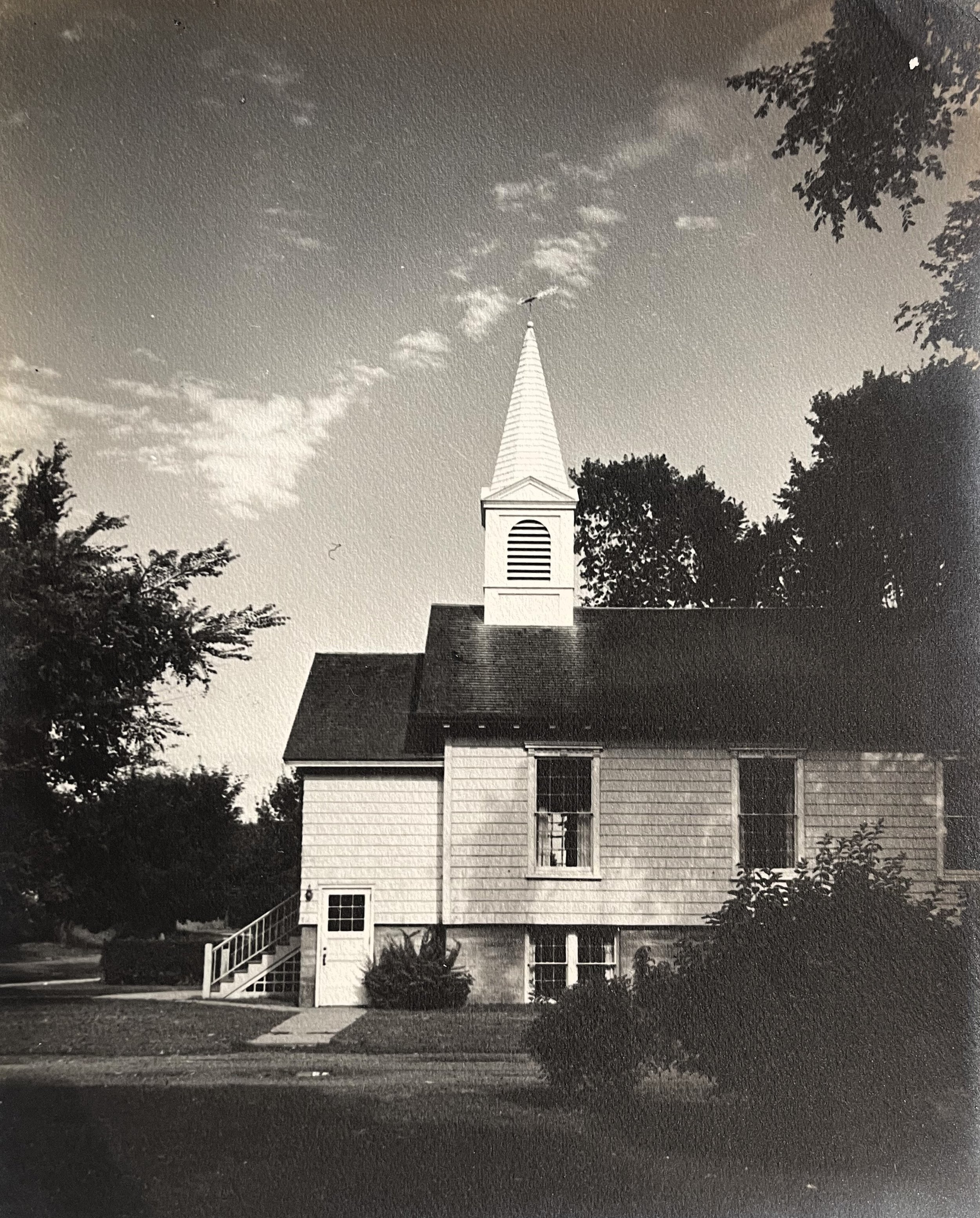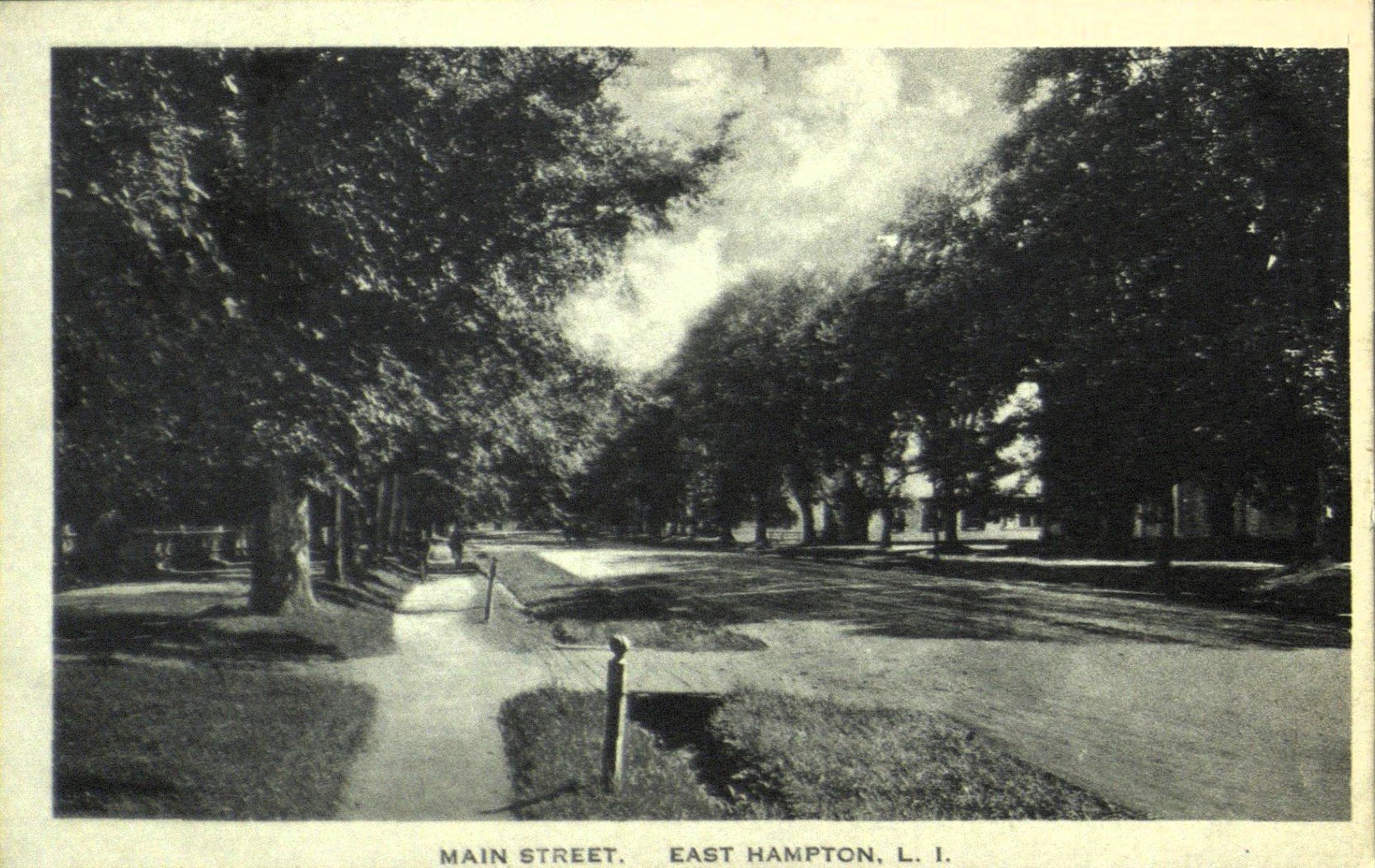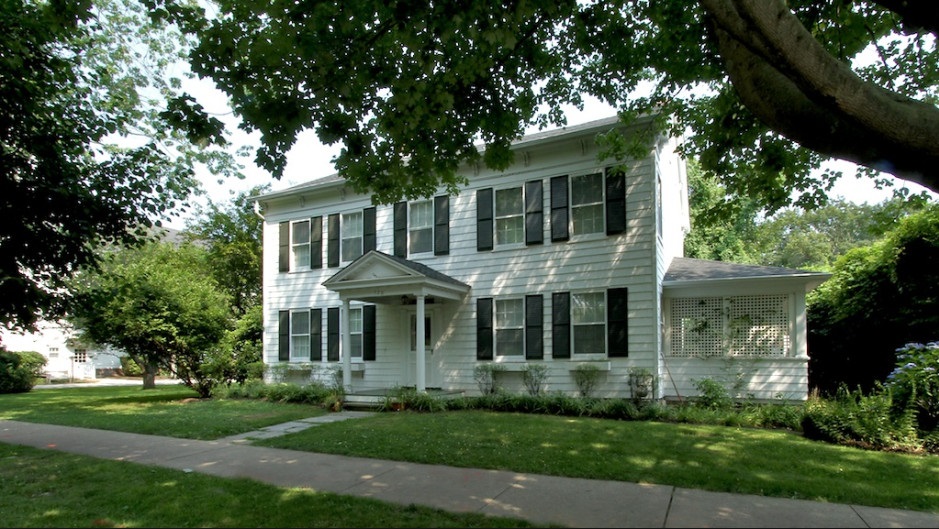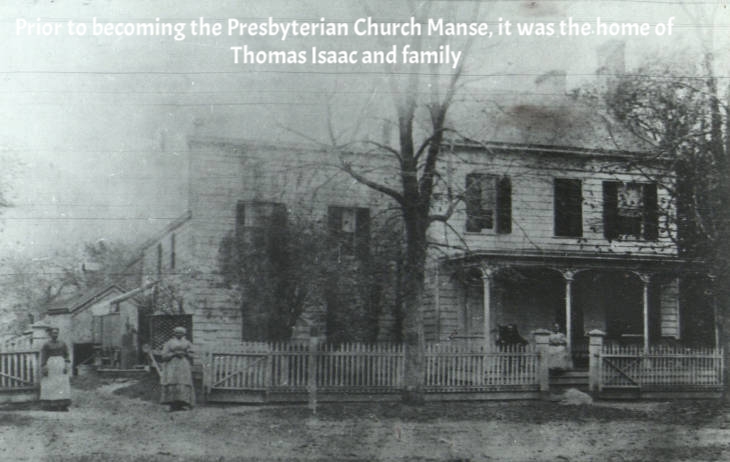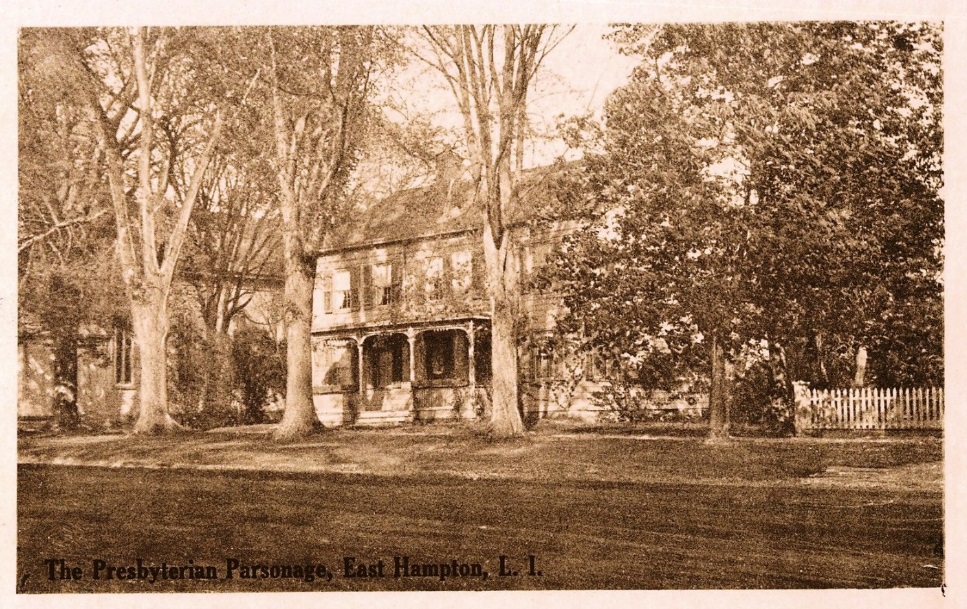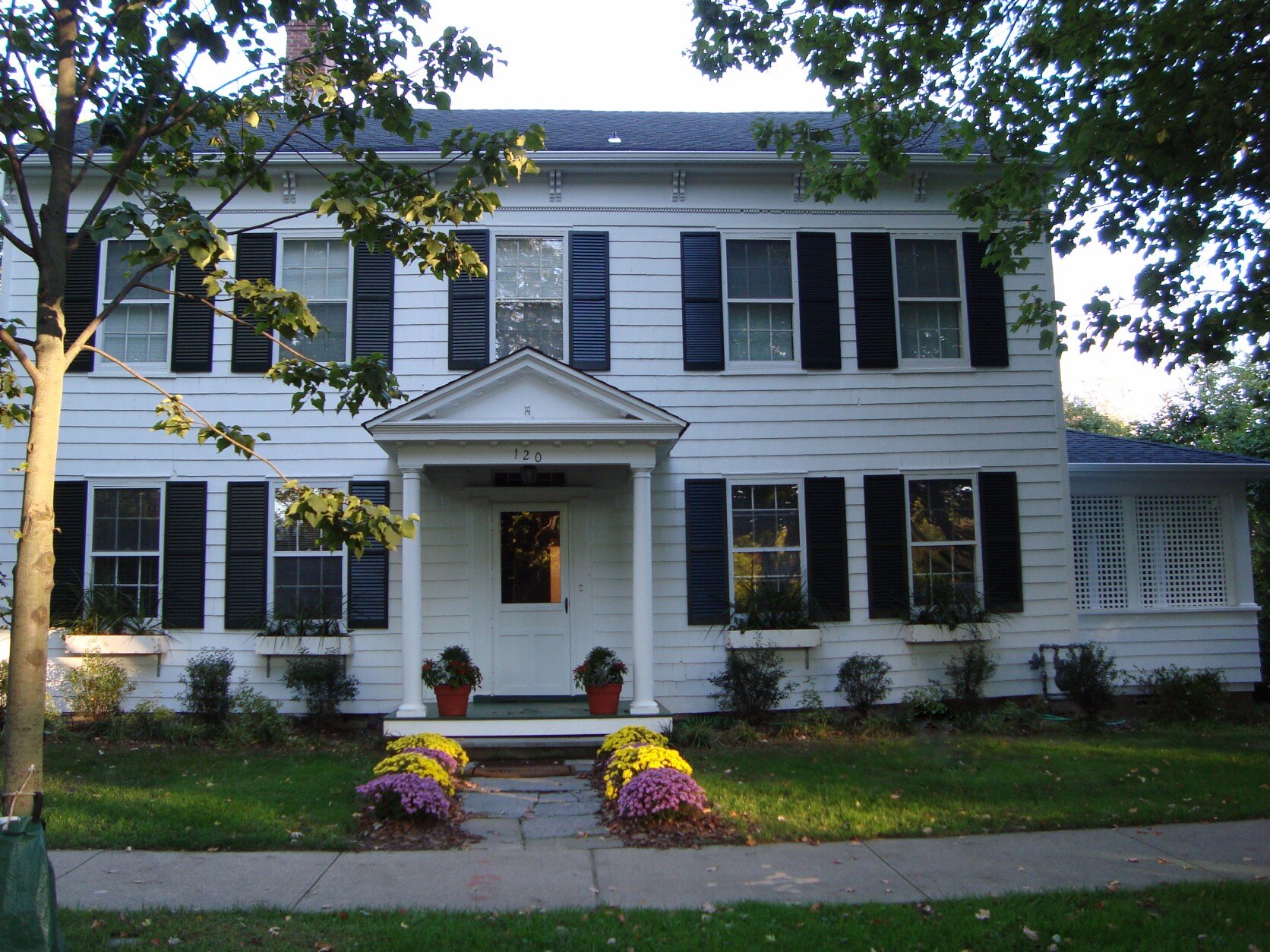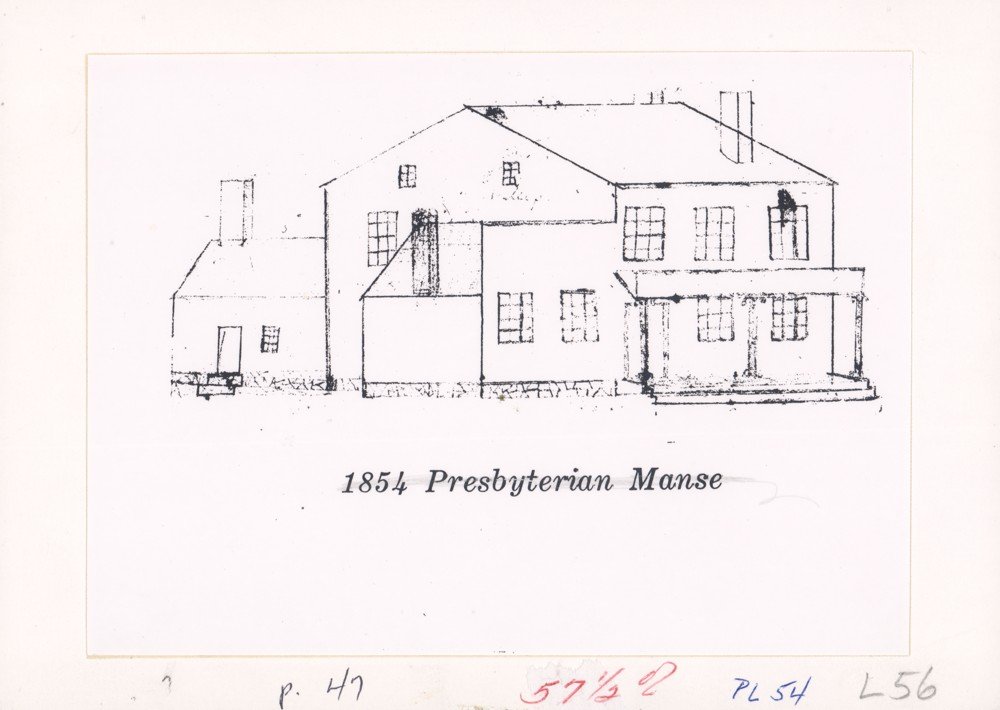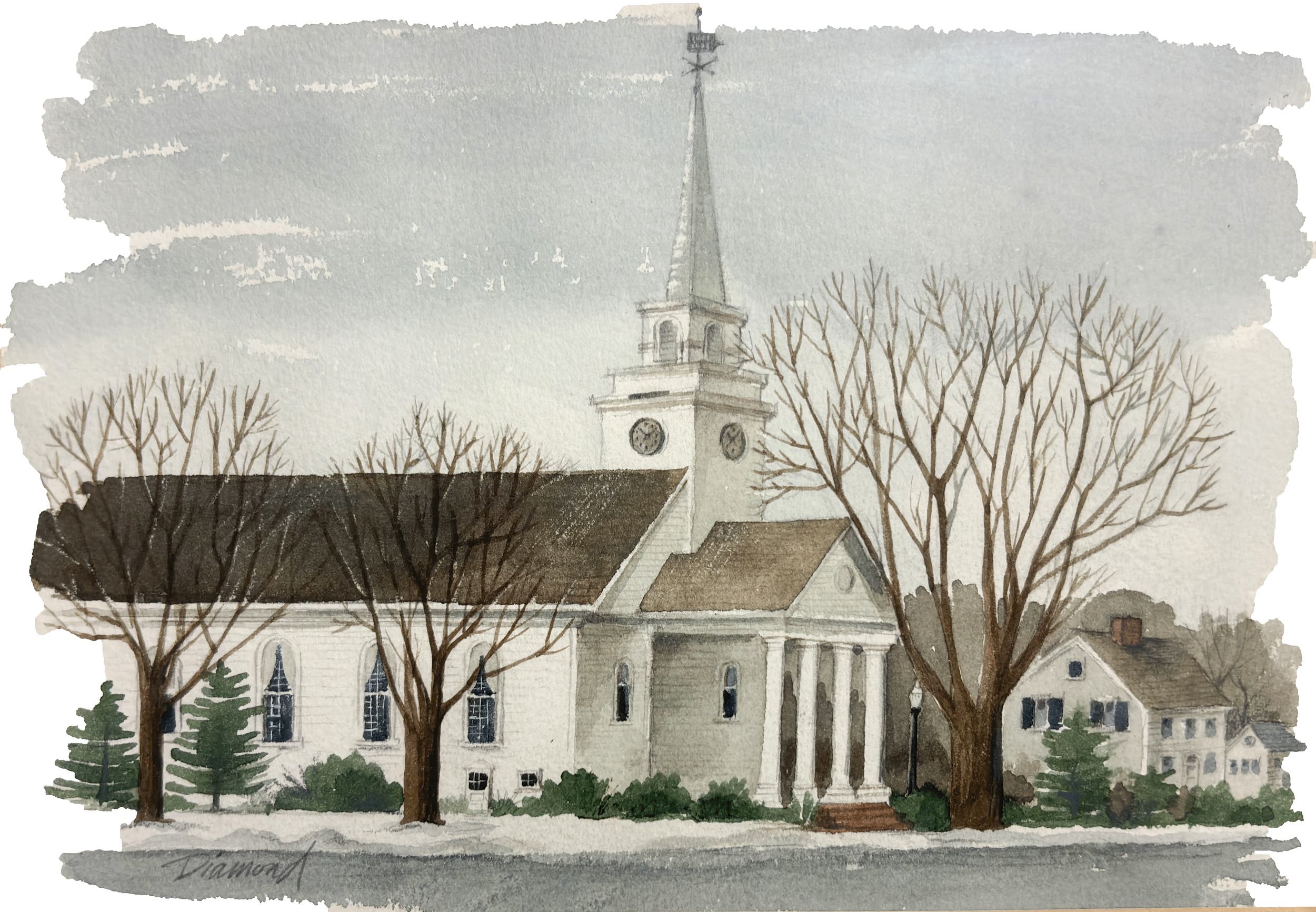
History
A Brief History of the First Presbyterian Church of East Hampton
In 1648 a small group of Puritan settlers came from New England and settled in an area of eastern Long Island that would become East Hampton Village. Of course, there was already a community of native Americans who lived on the East End, and they welcomed the new settlers peacefully. We know that these families – being Puritans - would have met on their first Sunday to read the scriptures, sing, and pray. These first families not only established a church, they governed the town, started a school, established local laws, and built a thriving community that we know today as the Town of East Hampton. There were three buildings which housed the congregation.
The first would have been a small, thatched roof cottage of about 20 x 26’ with crude wooden benches, which served several functions according to the community’s need: sanctuary, school room, courthouse, etc. The second building, which was described as “the largest and most costly edifice on Long Island” was built in 1717 and stood where Guild Hall is today. The present building was completed in 1861 and altered in the 1960s to its present appearance. The first minister called to the church was Thomas James in 1651, followed by Nathaniel Huntting in 1696 and Samuel Buell in 1746. These three ministers served the congregation for over 150 years. They were all indispensable to the small village as there would have been few, if any, educated members otherwise. They taught, witnessed wills, served as trustees of the town, and acted as intermediaries with the local natives. They were an integral part of the life of this community.
Throughout East Hampton’s history this church has served as a community gathering place, from holding the funeral service for the 22 sailors who perished when the “John Milton” crashed upon our shores in 1858, to the place where the residents of East Hampton held commemorative services following the events of 9/11. Then and now, the history of this church is inseparably intertwined with the history of our community.The church has welcomed 22 remarkable ministers in its long history and continues to be an important part of East Hampton’s story through its mission work, its spiritual guidance, and its community outreach. Today, we are grateful stewards of this legacy and aim to honor the church’s memory in all that we do.
1649 First Church
First Presbyterian Church traces its origins to this early, lay-led Puritan worship. In 1648, Puritans bought several thousand acres of land from Montauk Indians and founded East Hampton on the eastern end of Long Island; there they quickly established a lay church. In 1648 the first settlers of East Hampton worshiped in"Thomas Baker's ordinary" or tavern. By 1651, the town council assigned a minister, Thomas James, and paid him a salary of 44 pounds and “one horse.” A meeting house, a rude log chapel, was built house in what is now the "South End Burying" ground. Twenty-two years later in 1673 the church was enlarged. It was enlarged again in 1696/1698. By 1717, it became apparent that a completely new church was needed.
More on First Church→
1717 Church
In 1717 a large and elegant building was constructed about where Guild Hall now stands. The building served the community for almost 150 years. In 1747, this "olde Town Church" became Presbyterian.
More on 1717 Church→
1861 Church
Original facade of 1861 Church in a Romanesque Revival style with double entrances. This church replaced the 1717 church. The church had two steeples. It was converted to a one steeple church in 1960/61.
More on 1861 Church→
1961 Church - The Church Today
The present building was constructed in 1860 and extensively remodeled in 1960-1961 to resemble the "New England Meeting House" style of architecture.
More on 1961 Church→
The Session House
The Session House, originally stood on Main Street near where Whites Pharmacy is today. It was a community prayer meeting house. It then was moved alongside the church, facing Main Street, and was called the Chapel. It was moved to its current location in 1926 and placed atop a large basement foundation for Sunday School rooms. The Steeple belfry of the Session House held the bell from the 1858 shipwreck of the John Milton. The steeple was destroyed in the Hurricane of 1938. It was rebuilt the following year and the bell was hung again. The bell of the John Milton was permanently loaned in 2012 to the Montauk Lighthouse Museum.
More on the Session House→
The Manse
The manse is home to the church minister. Originally built in c. 1830, it was expanded in the 1880s. Prior to becoming the Church Manse it was home to Thomas Isaac and Family. An earlier manse, located next to what is now St. Lukes Church, was sold in 1895.
Rowdy Hall
Rowdy Hall, was a home that stood, next to the church. It was moved to Gay Lane and later to its present location on the westerly corner of David and Egypt Lane.
More History
Booklet - A Brief History of the First Presbyterian Church of East Hampton 1648 - 1998,
by Rev. John Ames (35page pdf file)The Beecher Hand House - A Brief History of Our Village Hall by Averill D. Geus
Church Records from 1830-1850 including baptisms, marriages, and deaths. This voume contains Baptisms from 1831-1835, 1849 and 1850 with Marriages from 1830 to 1849 and Deaths between 1830-1849. This is one of several volumes from the East Hampton Presbyerian Church Records, and it includes names of people of color, including formerly enslaved people. East Hampton Library Long Island Collection.
David Huntting, Historical Address to East Hampton Presbyterian Sunday School, 1875 This address was given to the Sunday School students at East Hampton Presbyterian Church in 1874, and published by the Sunday School in 1875. East Hampton Library Long Island Collection


